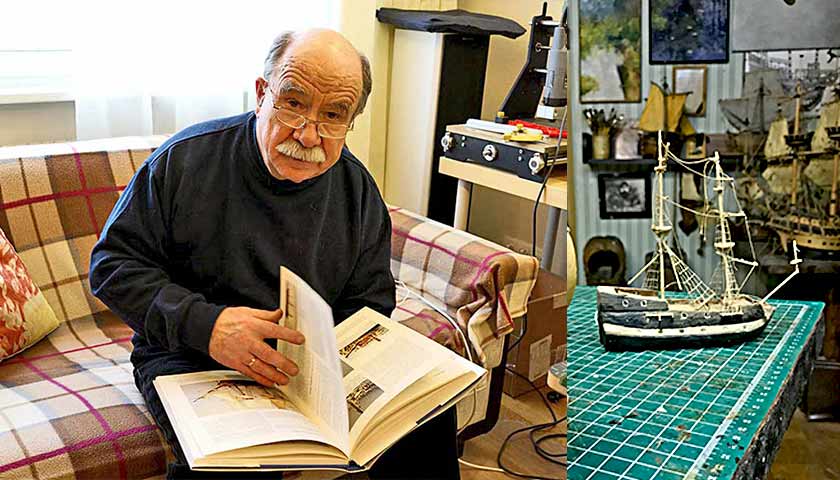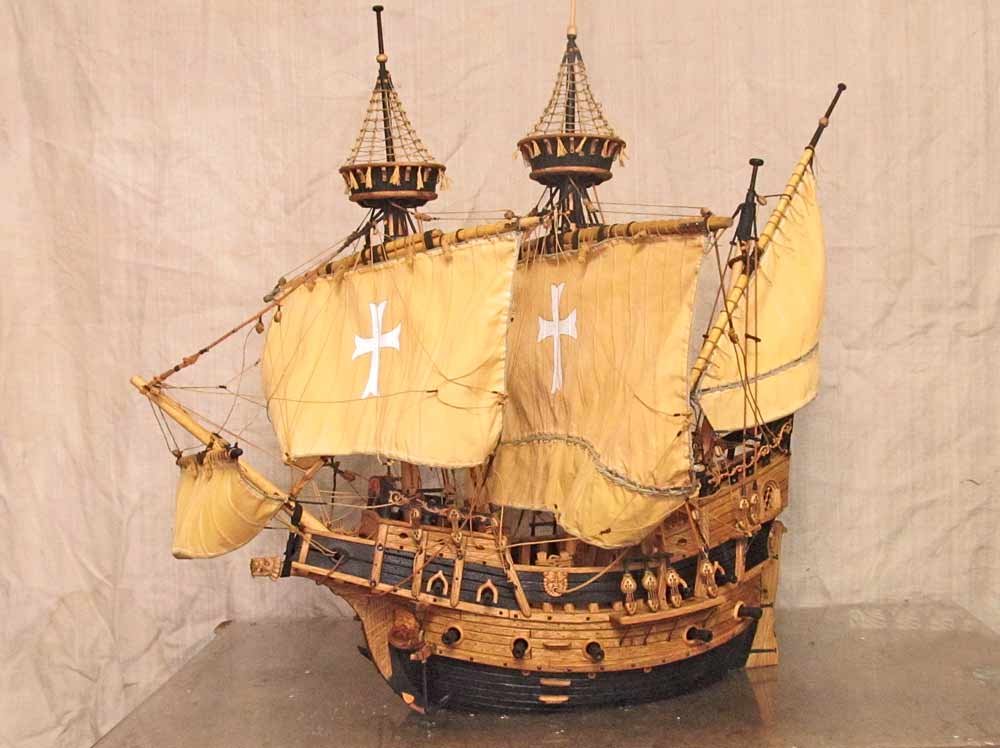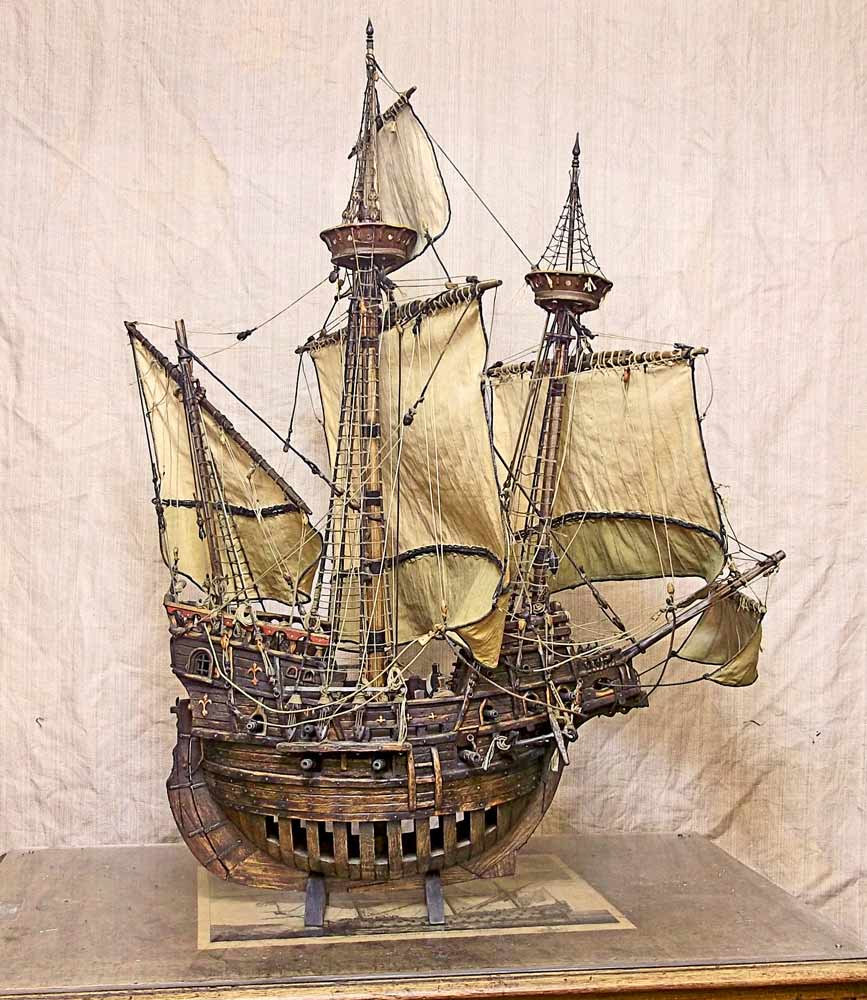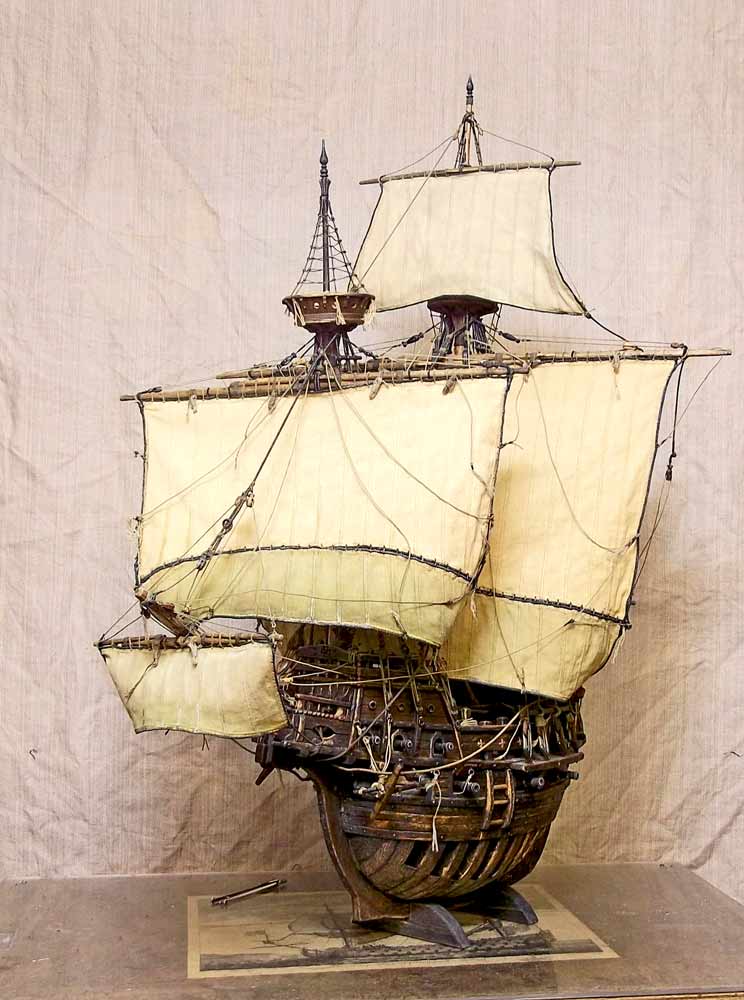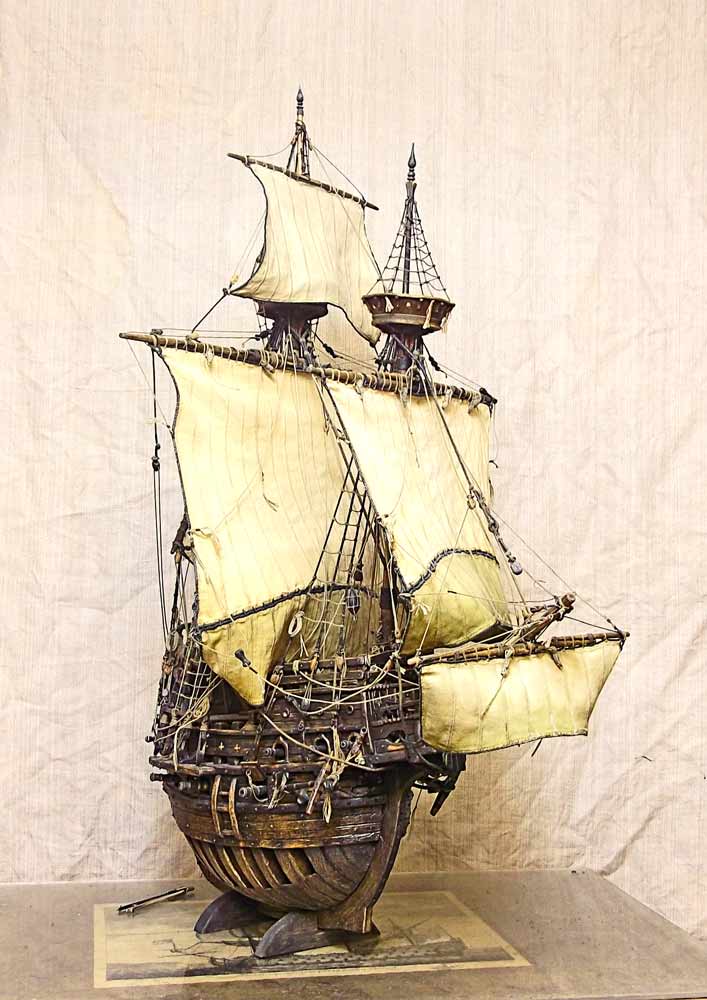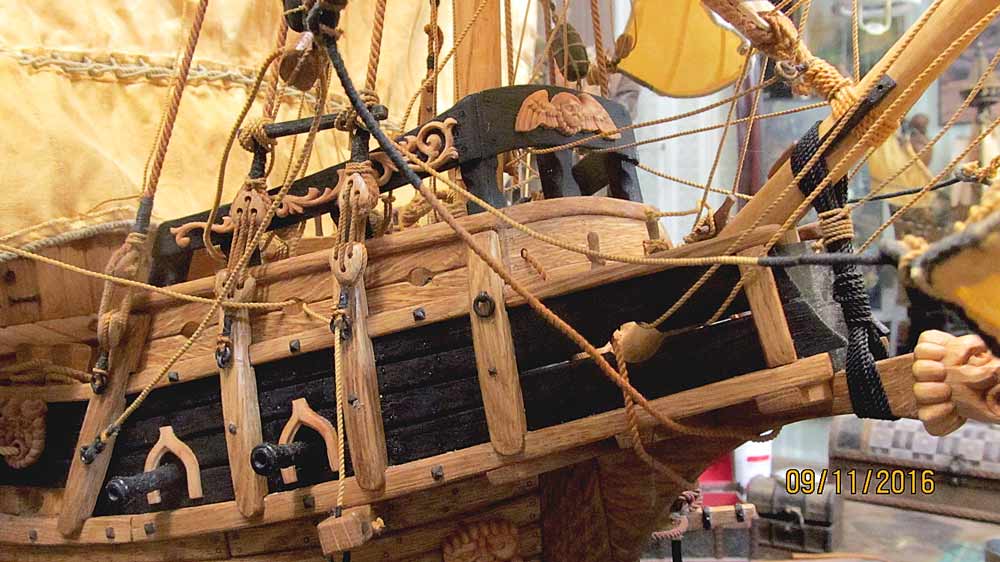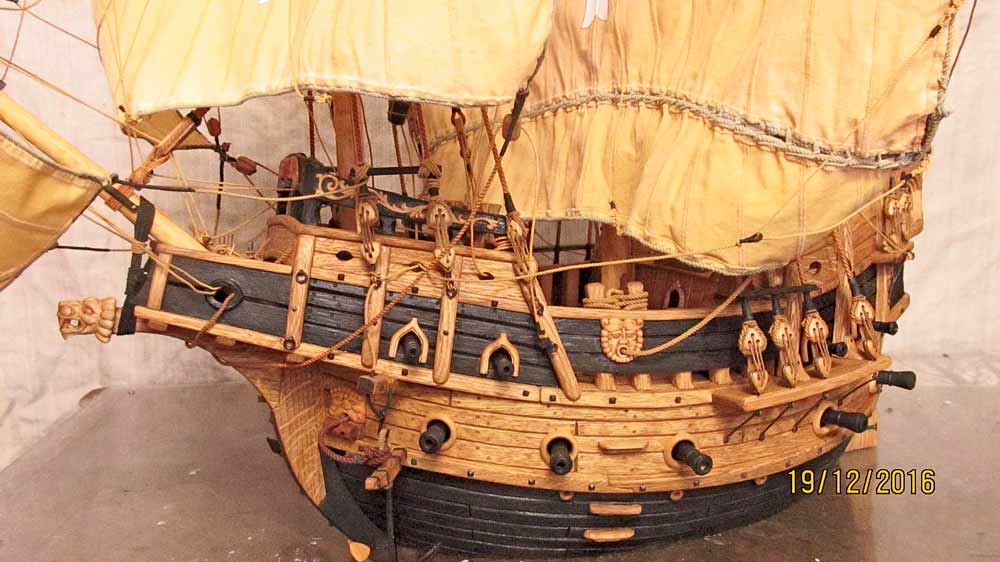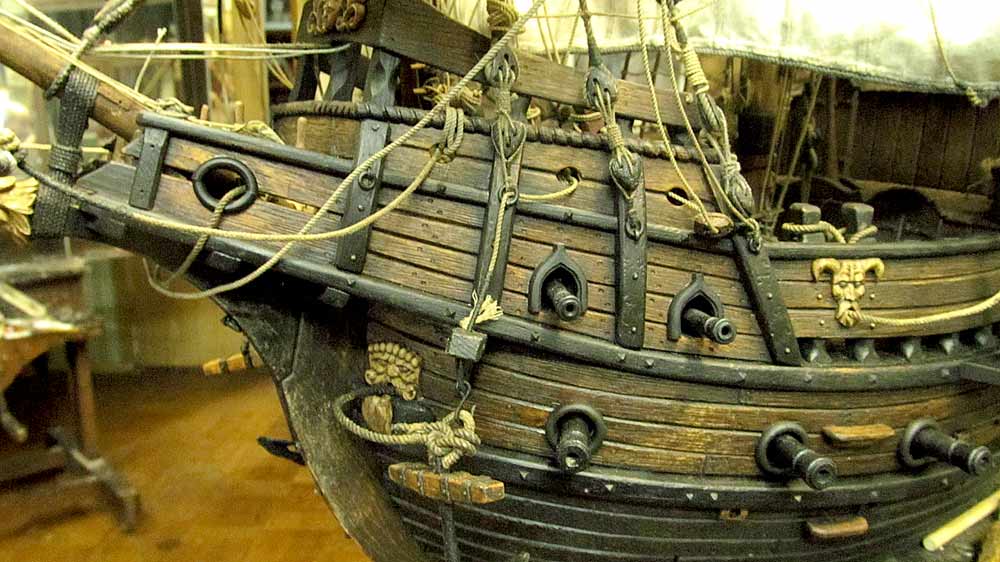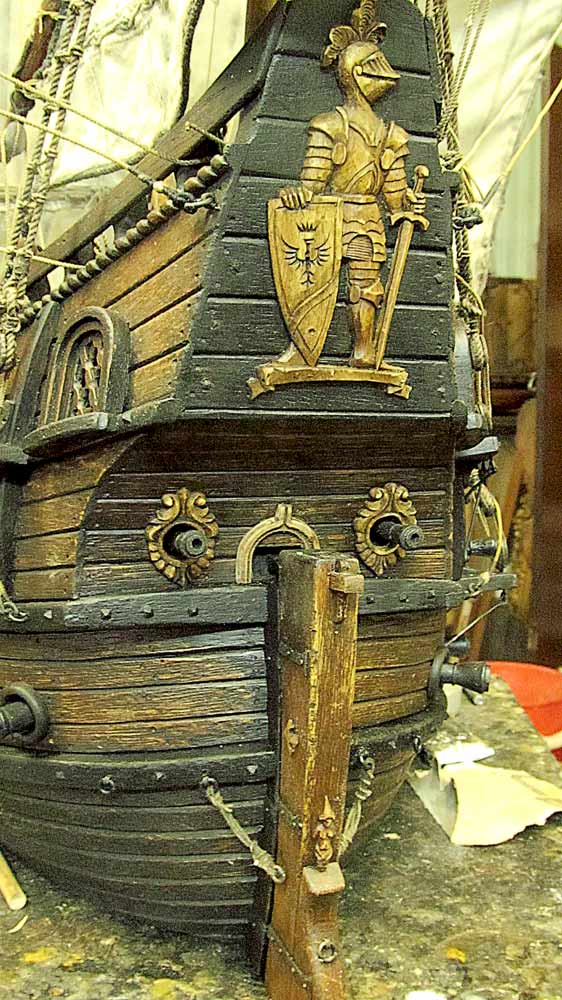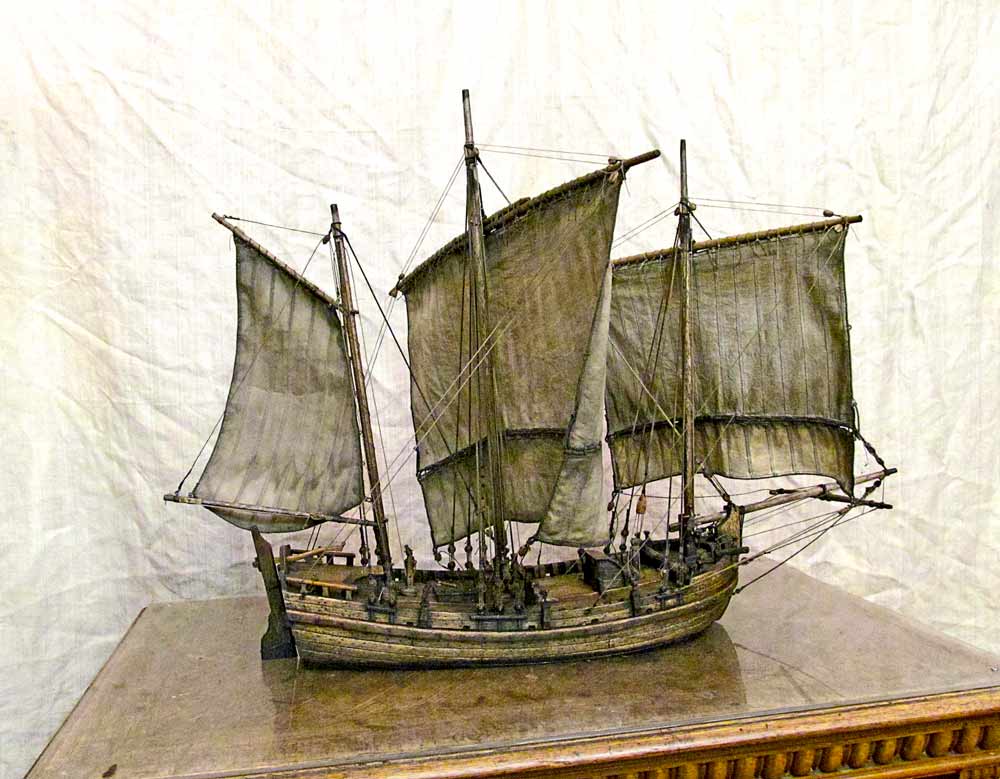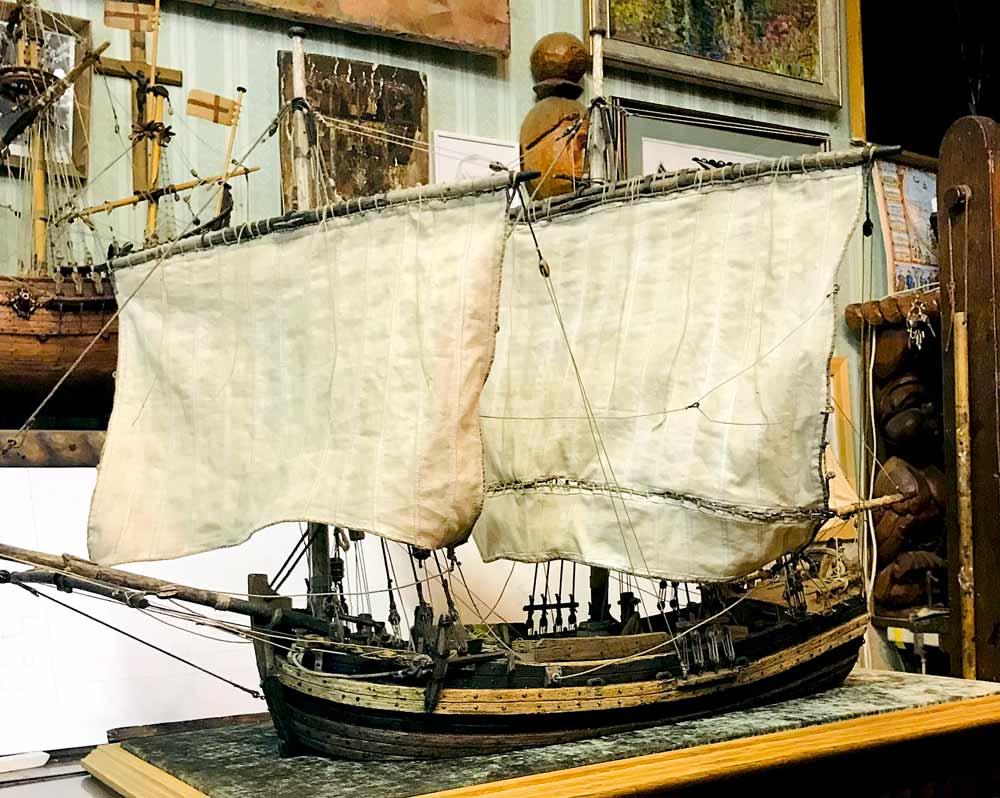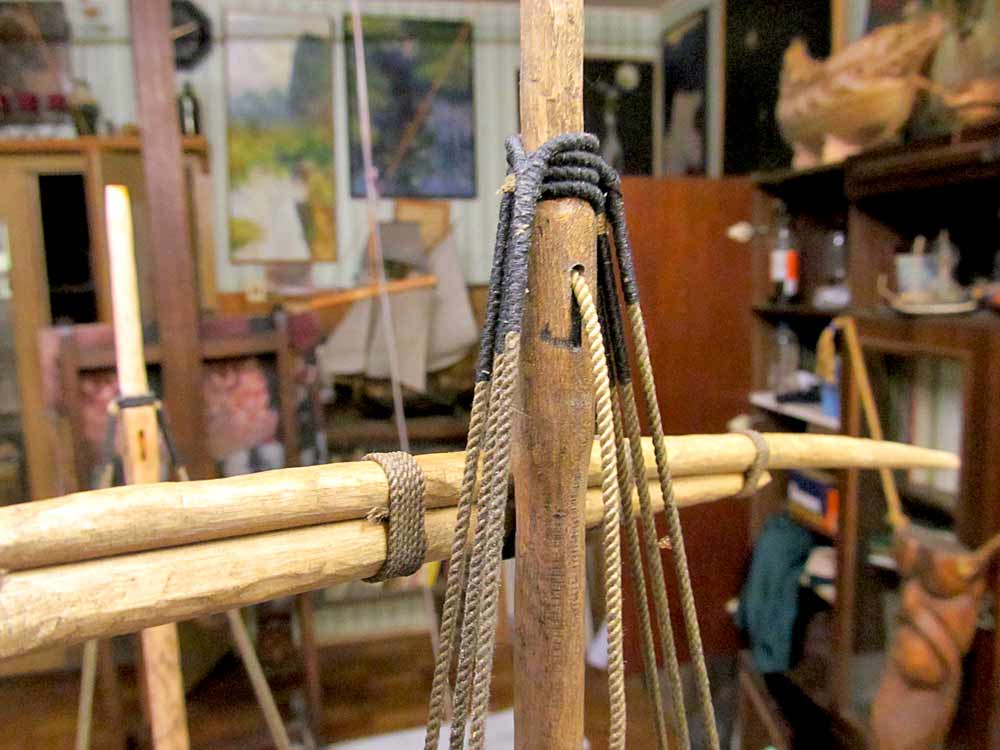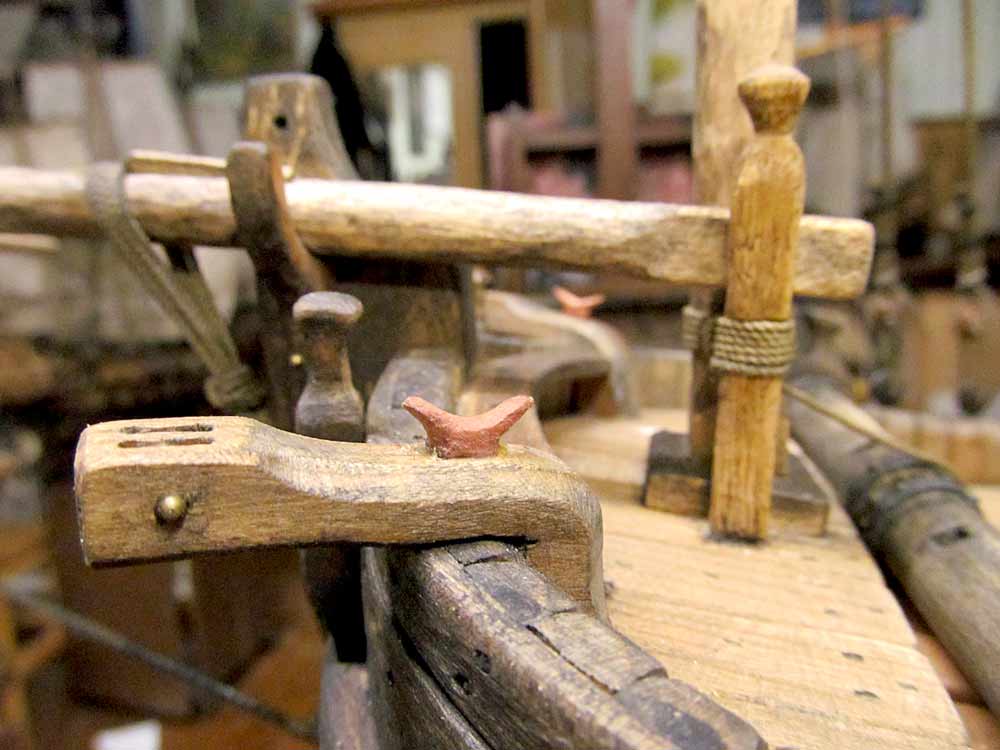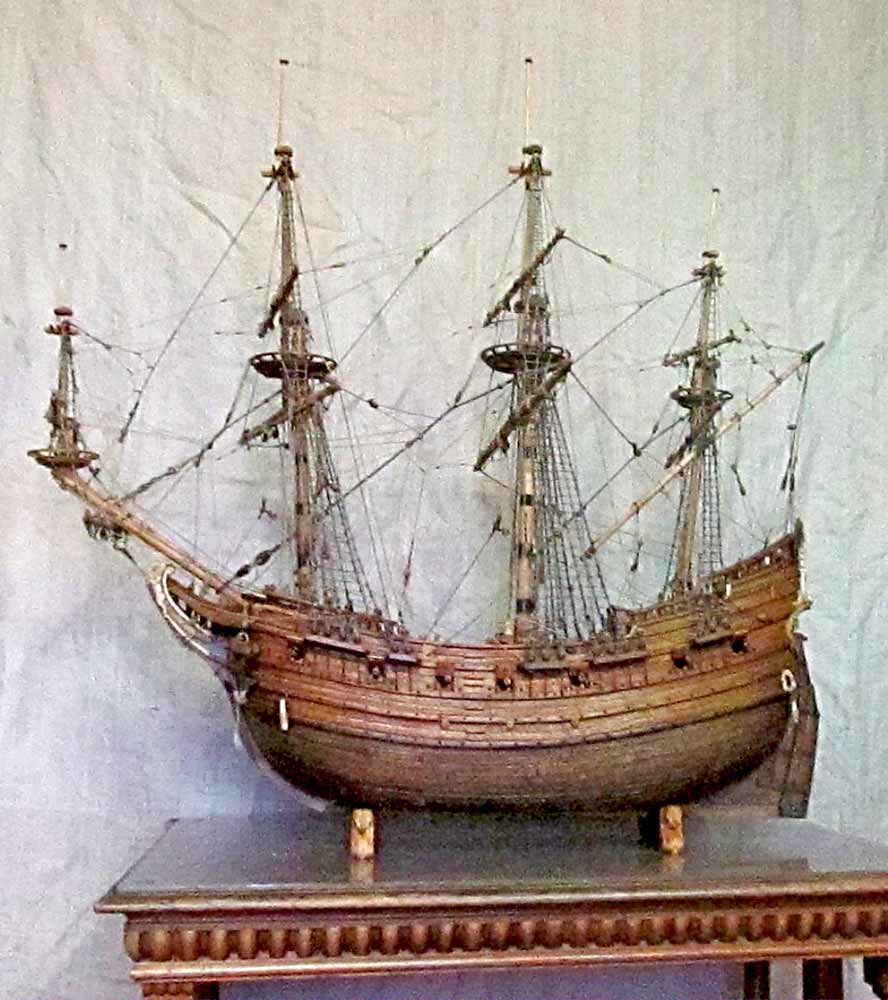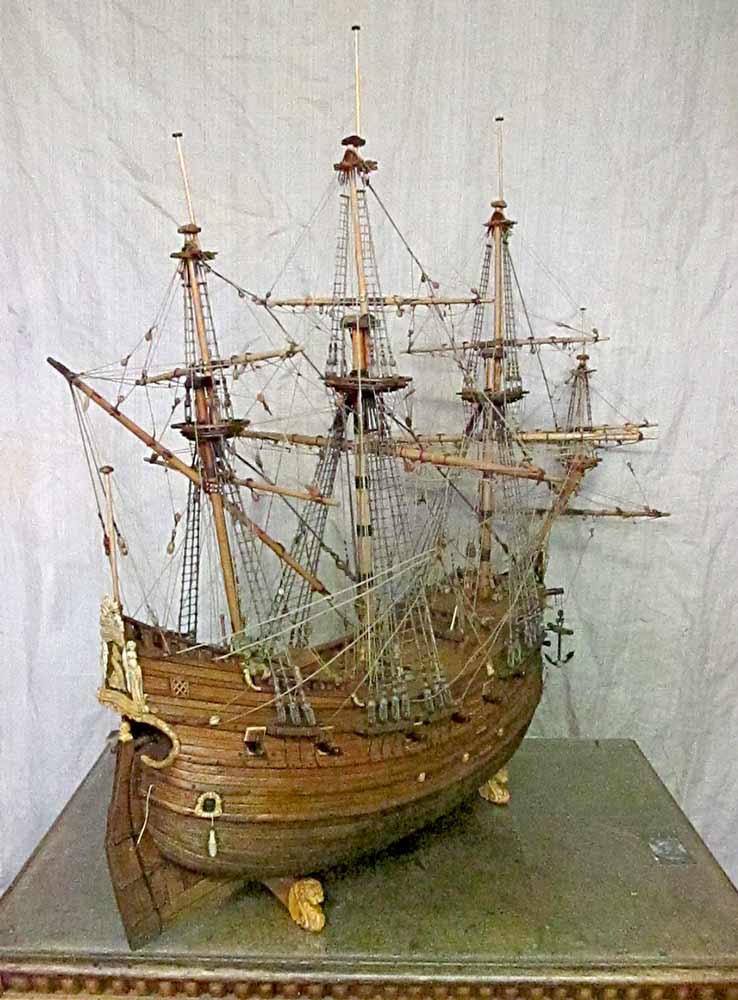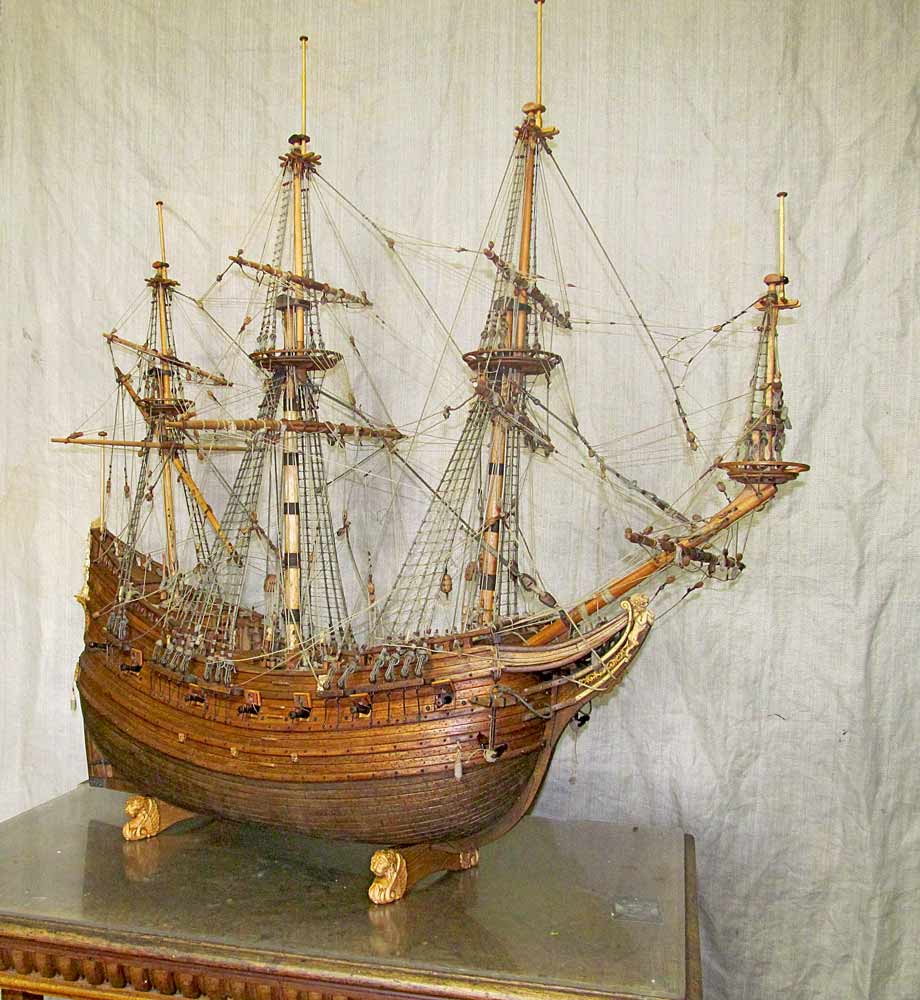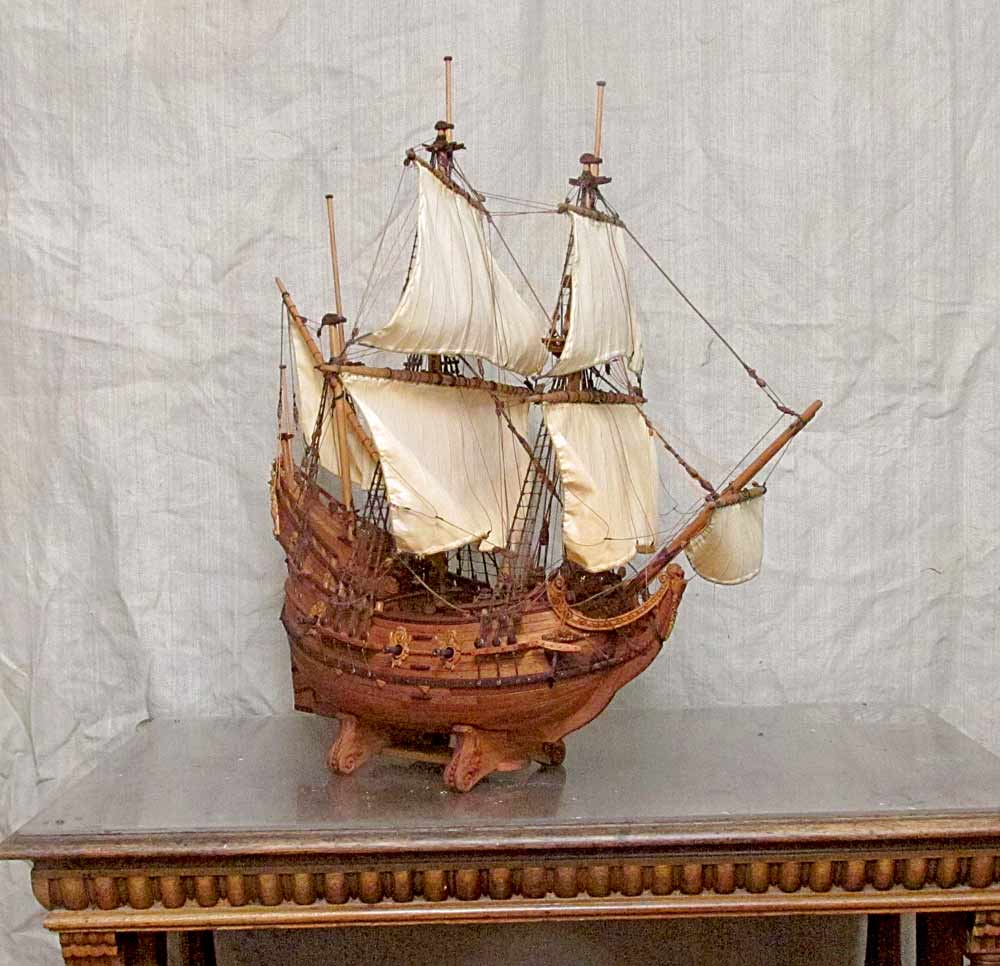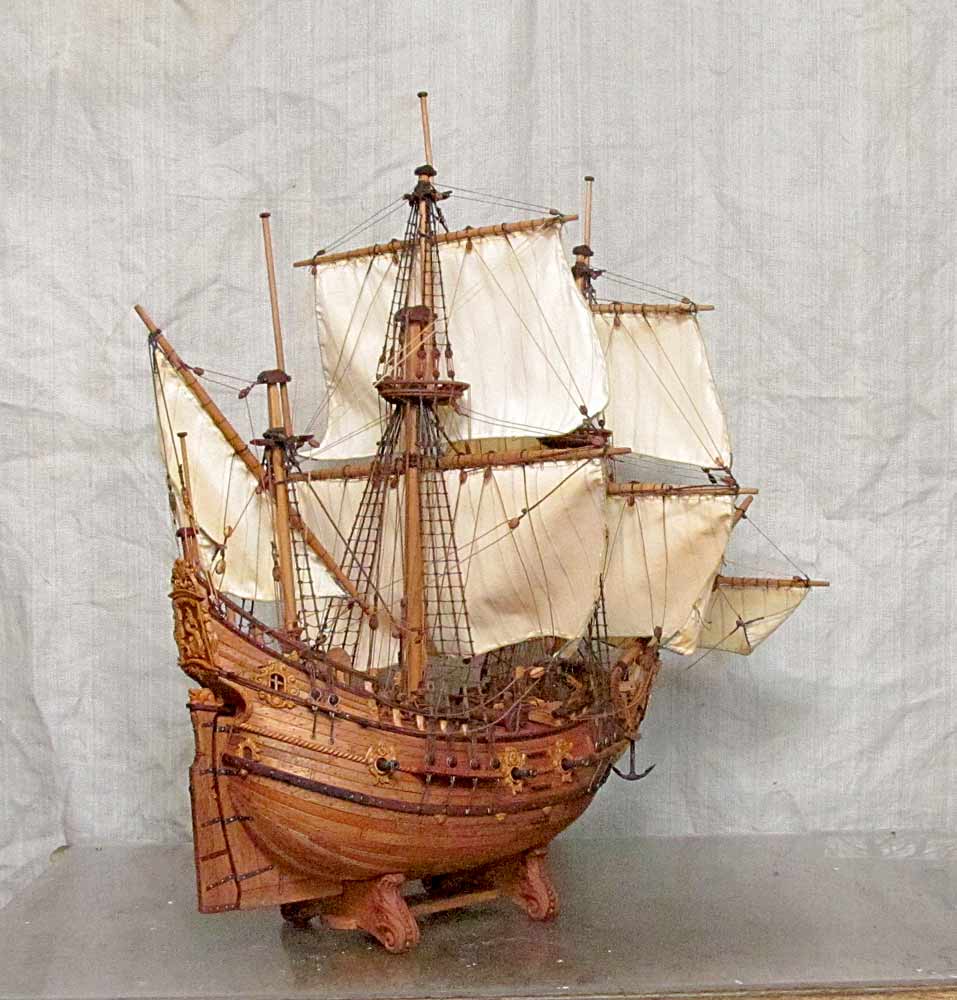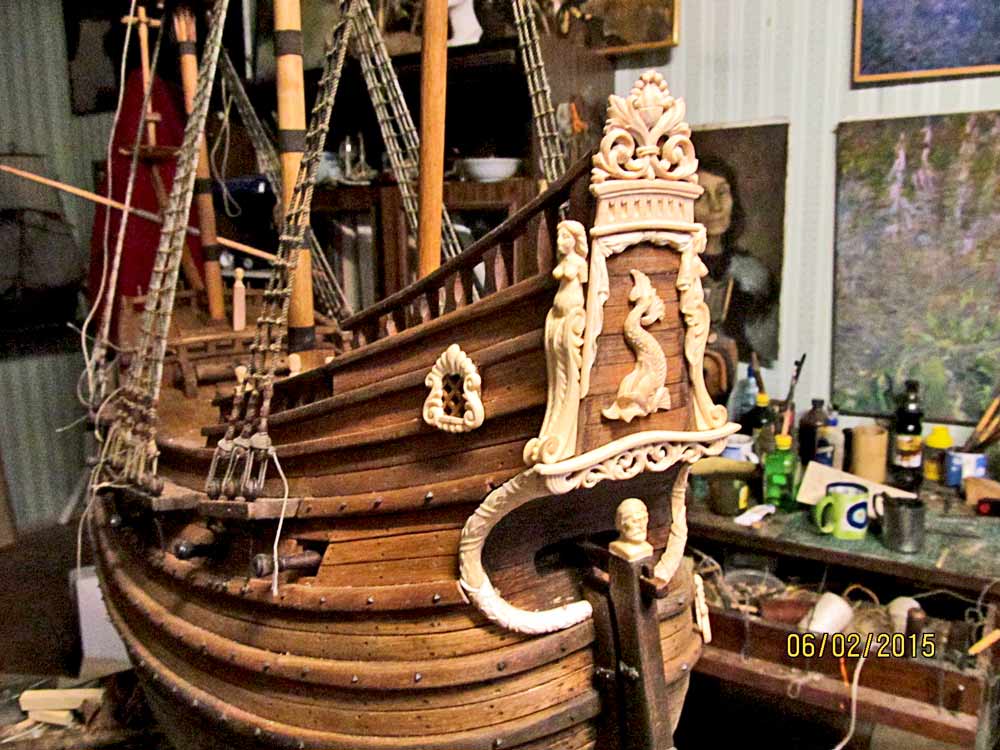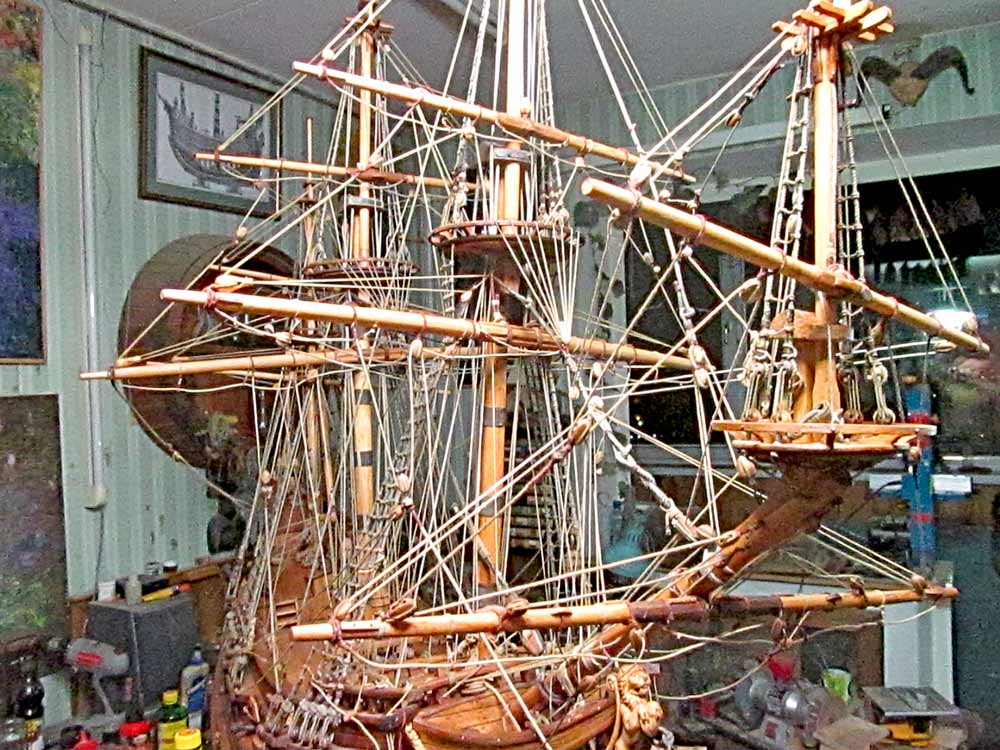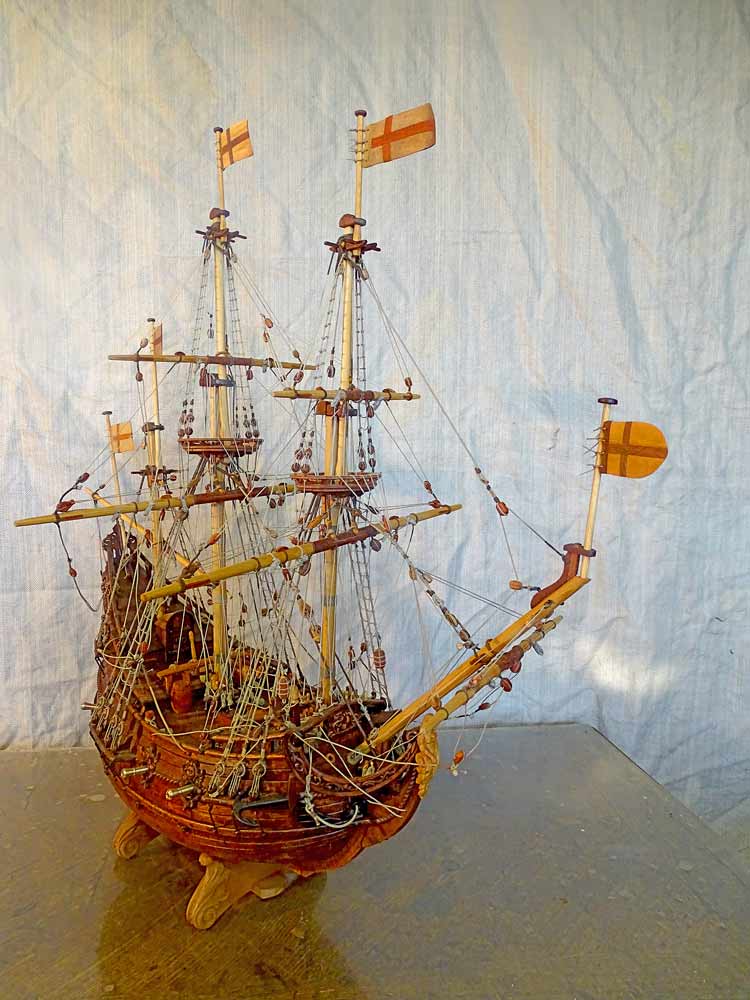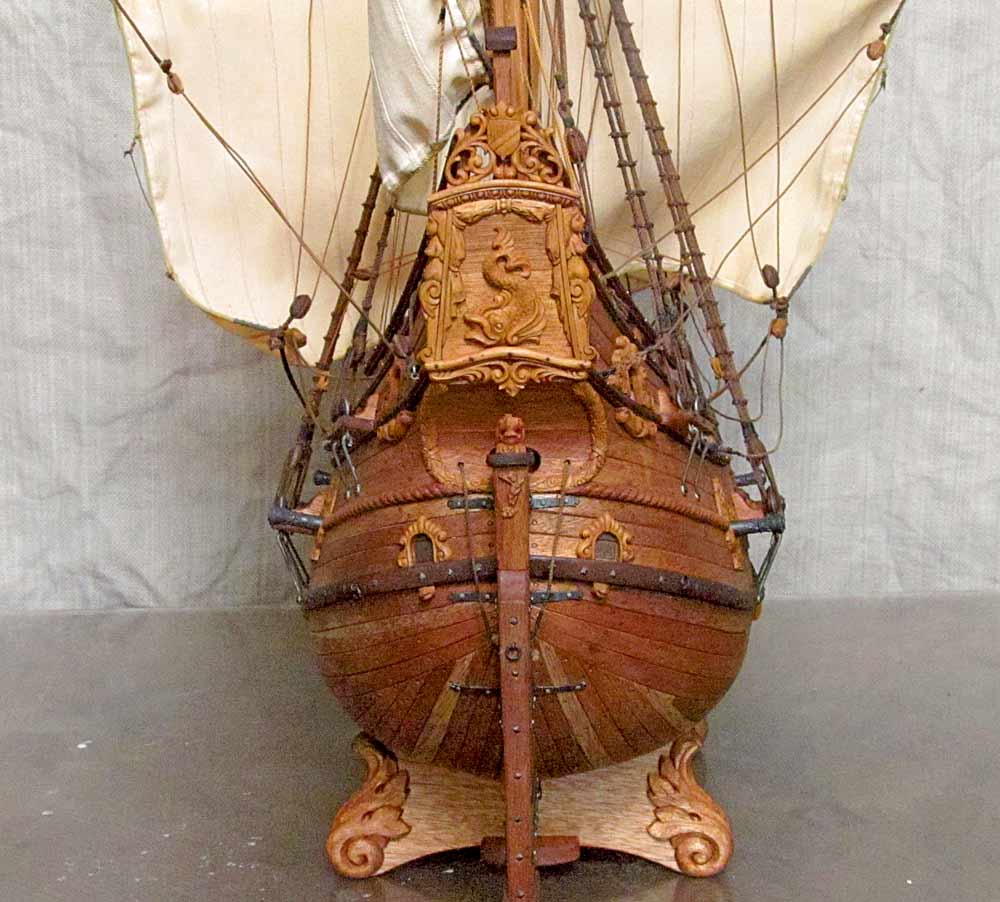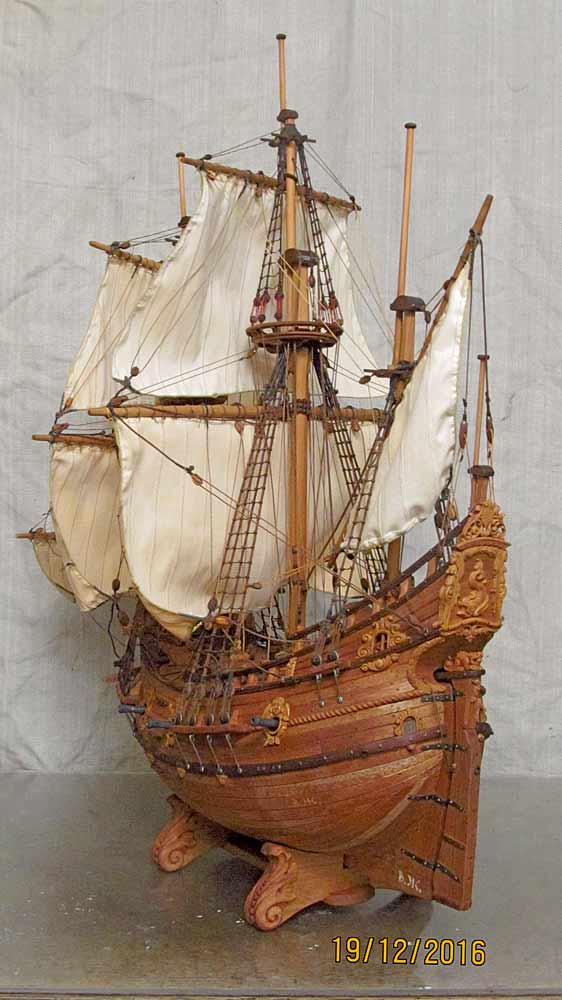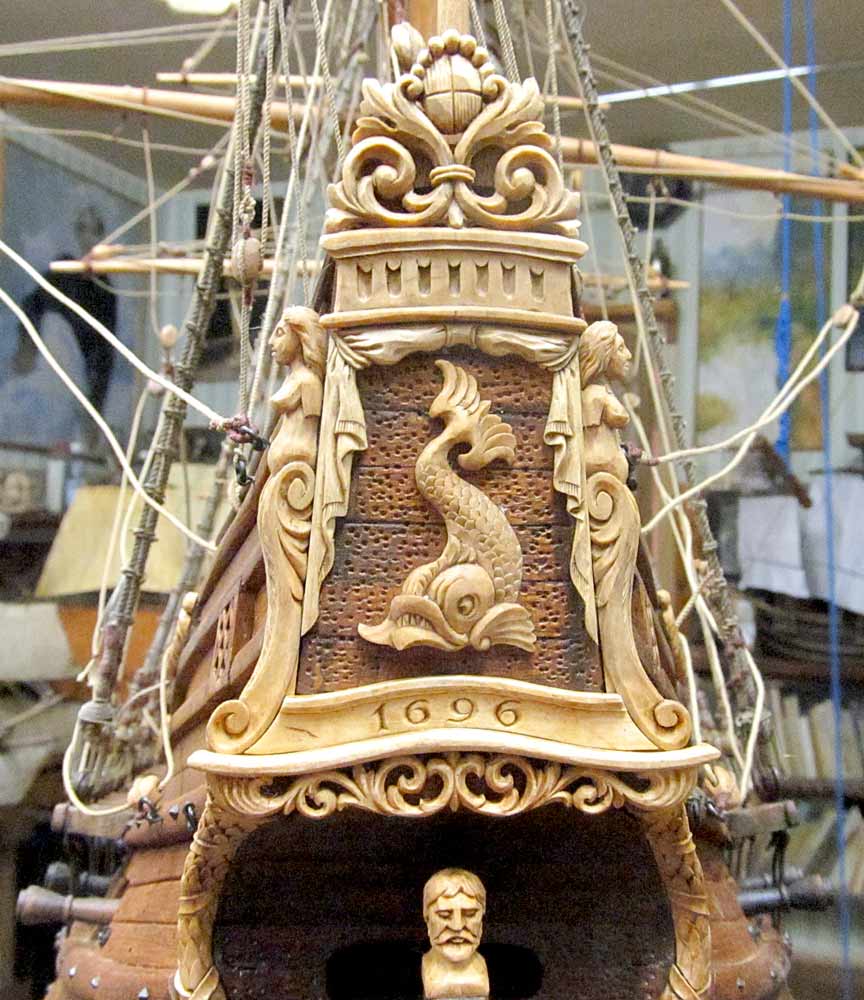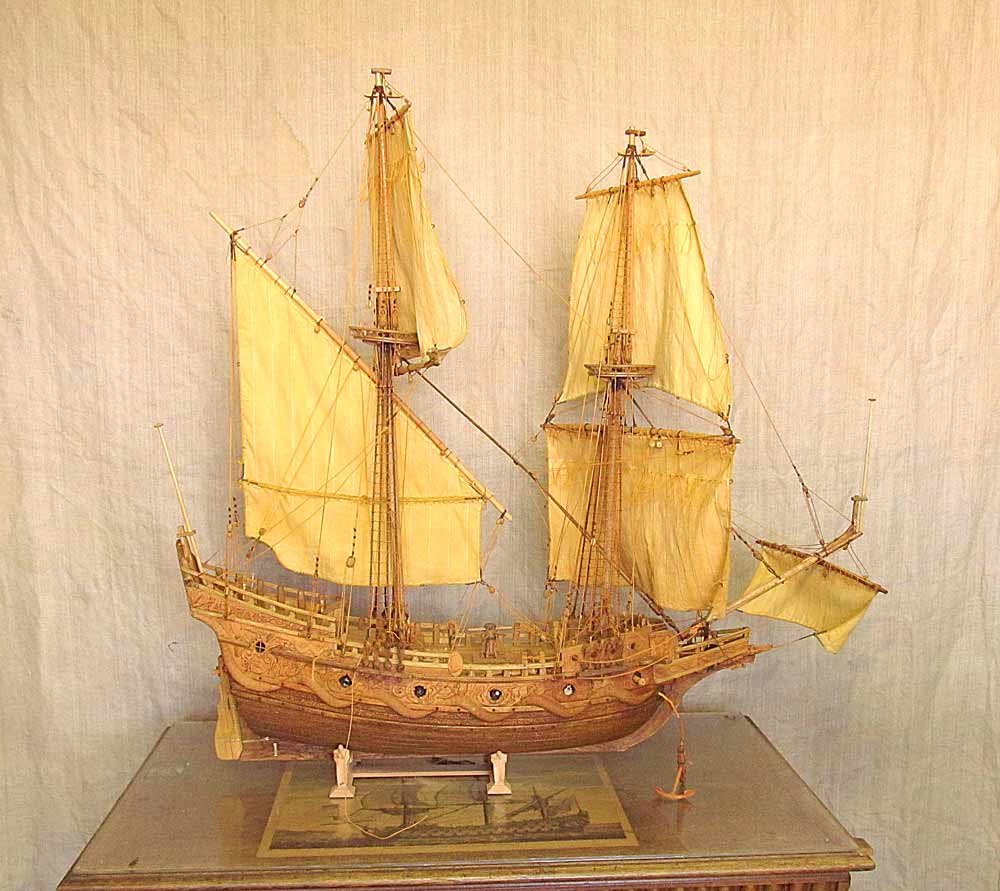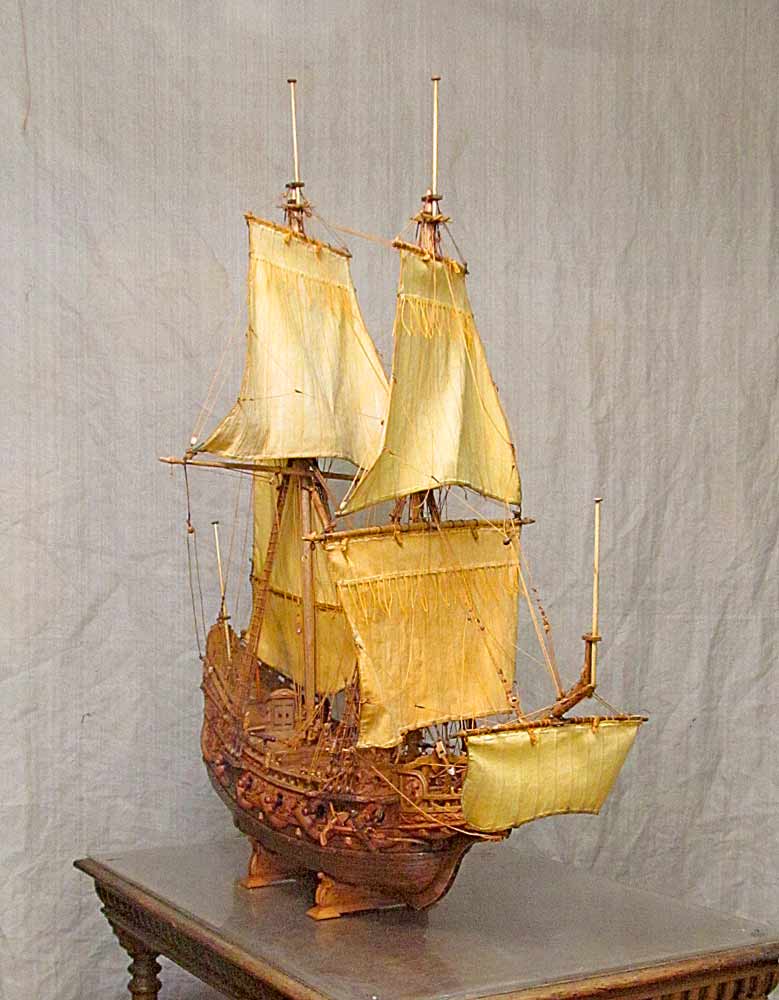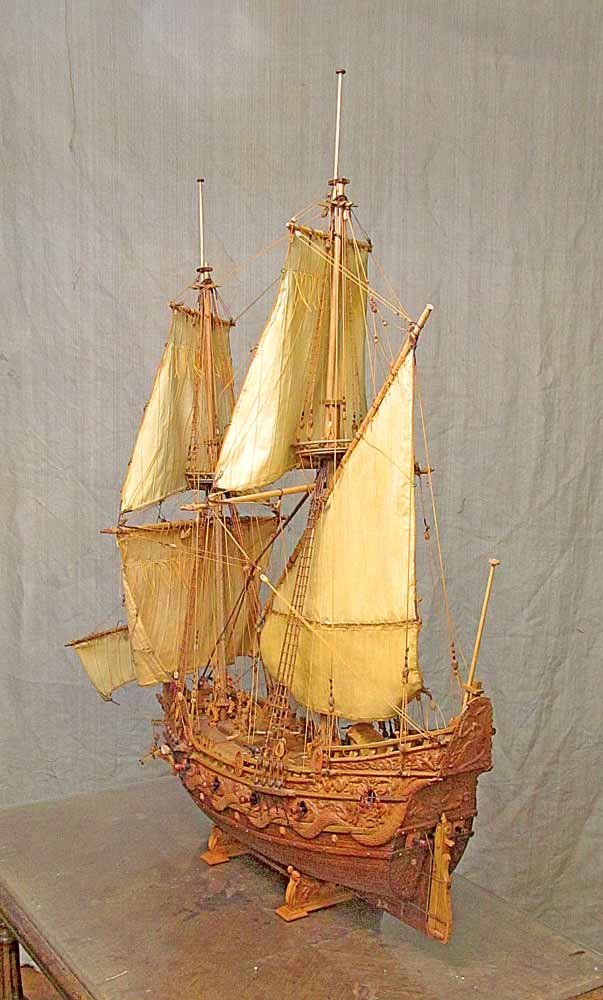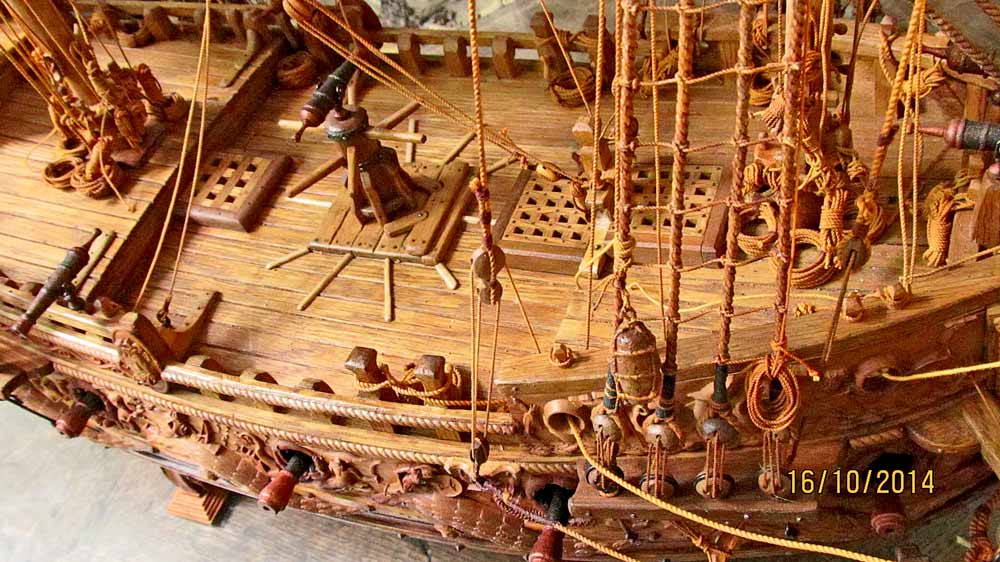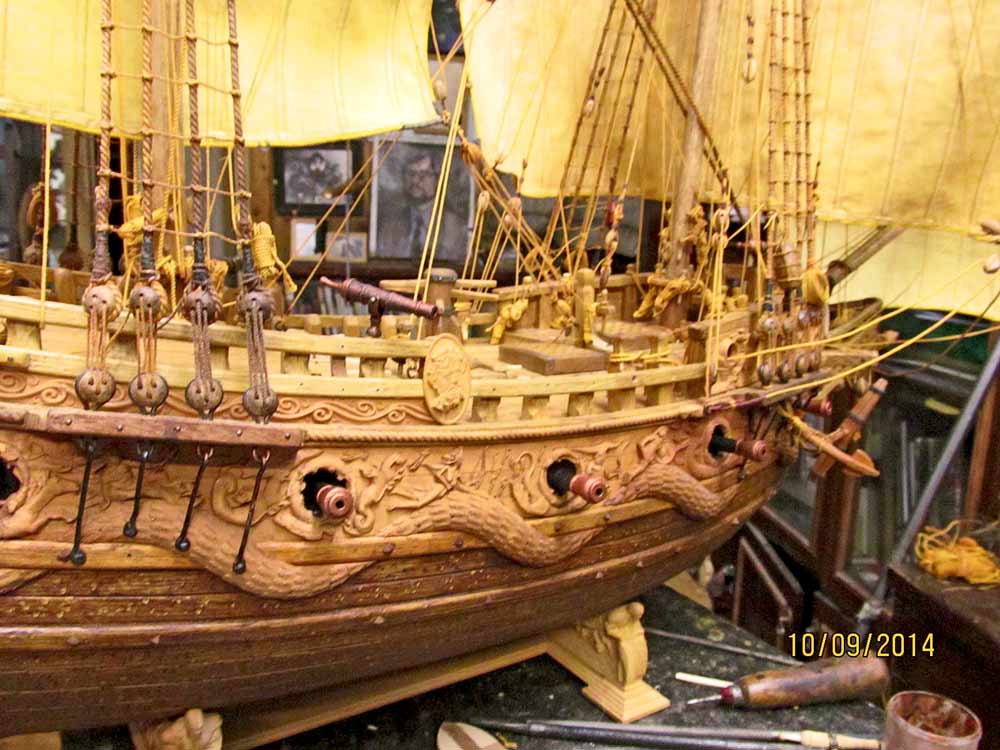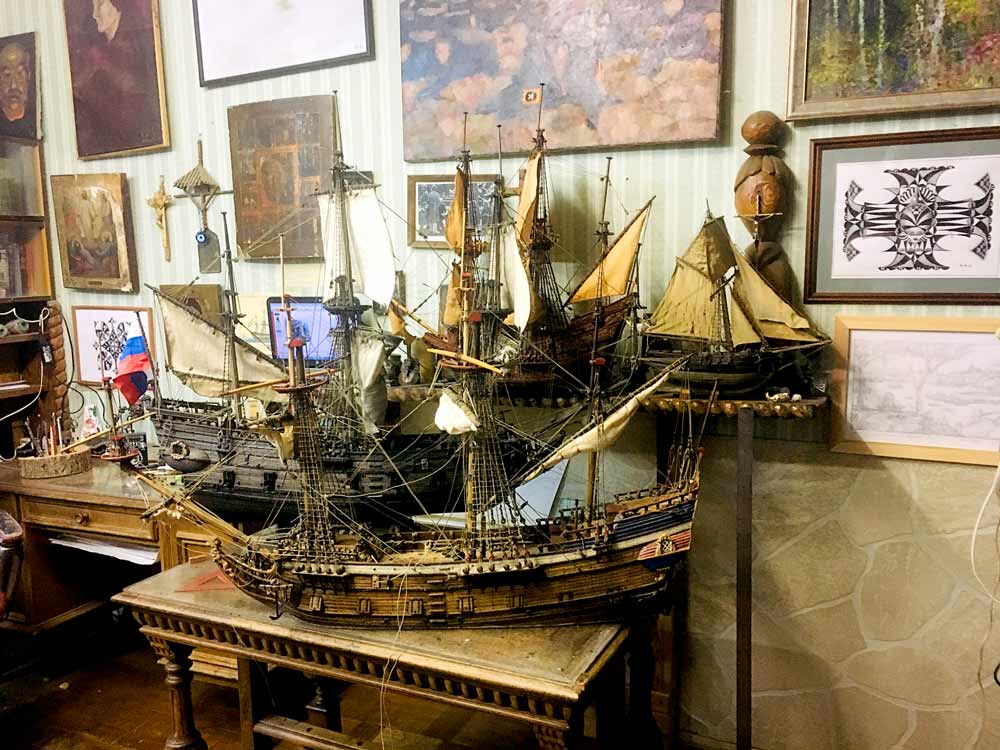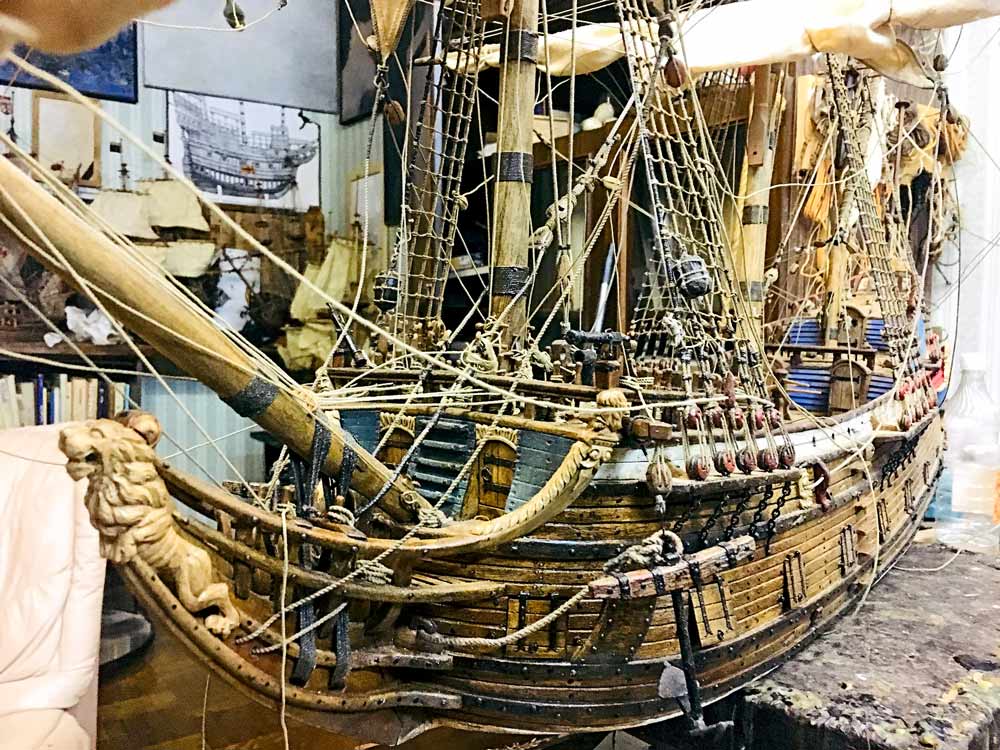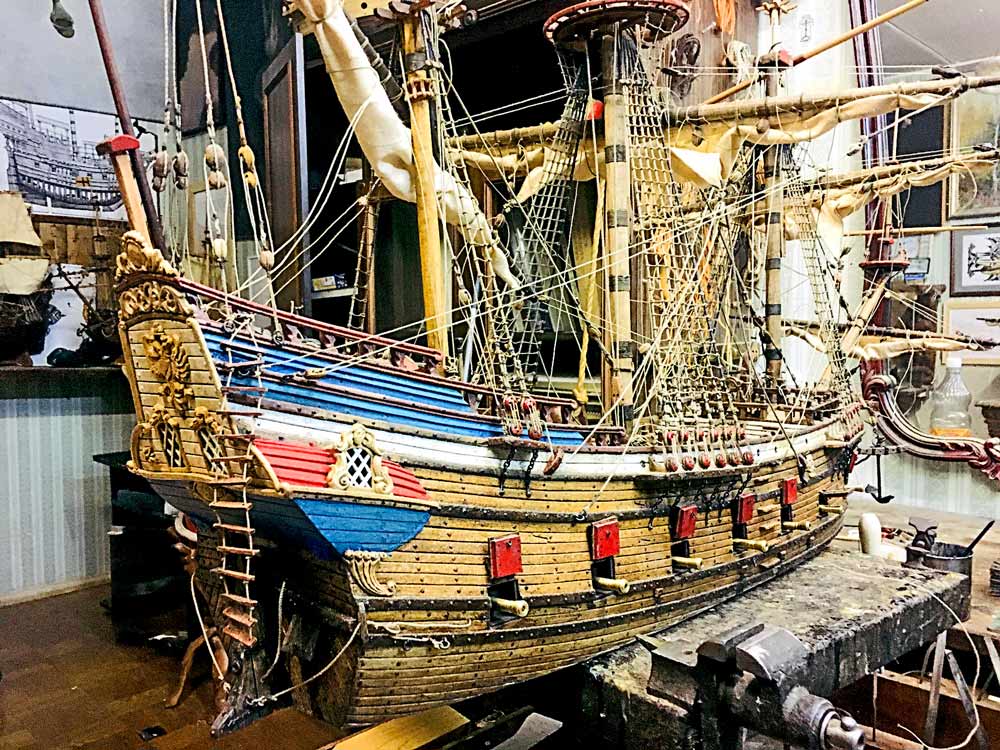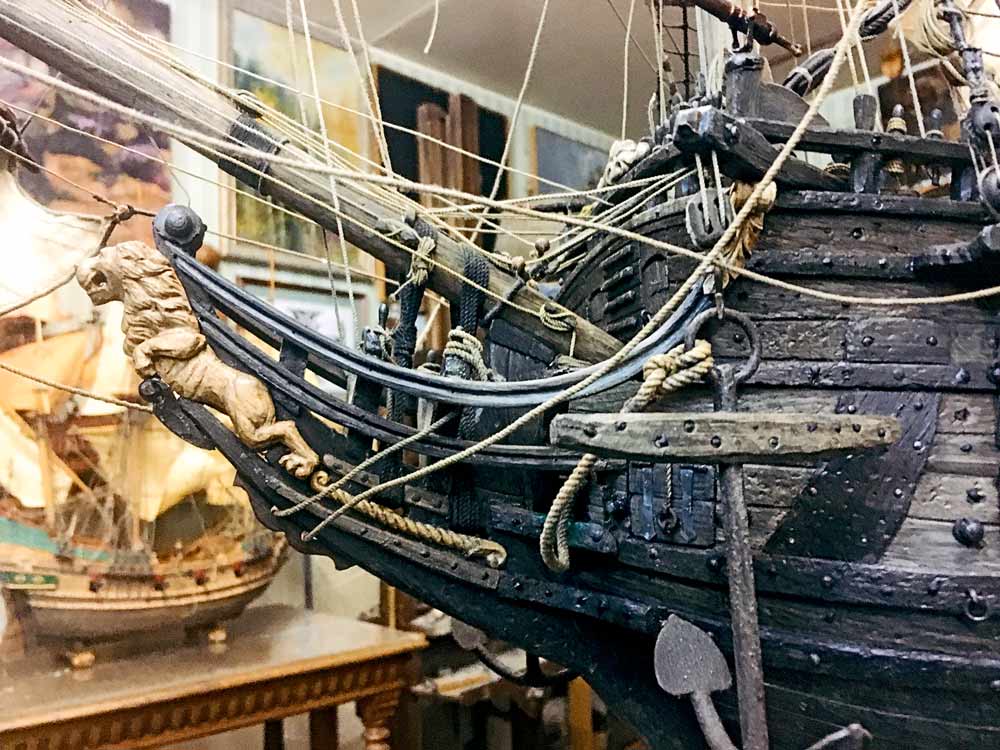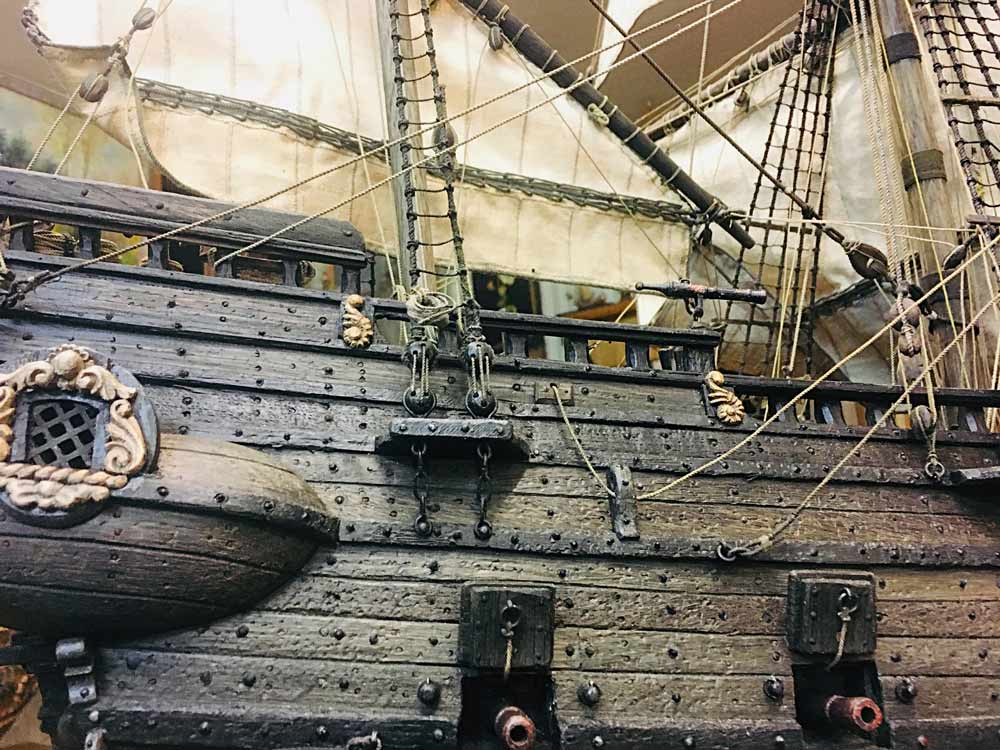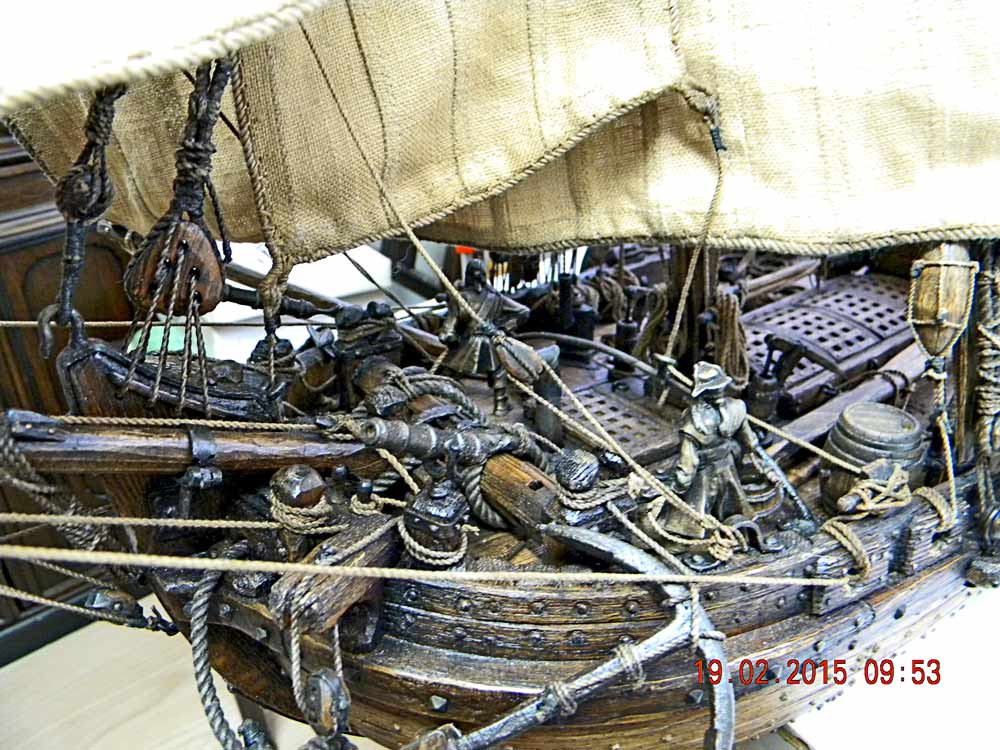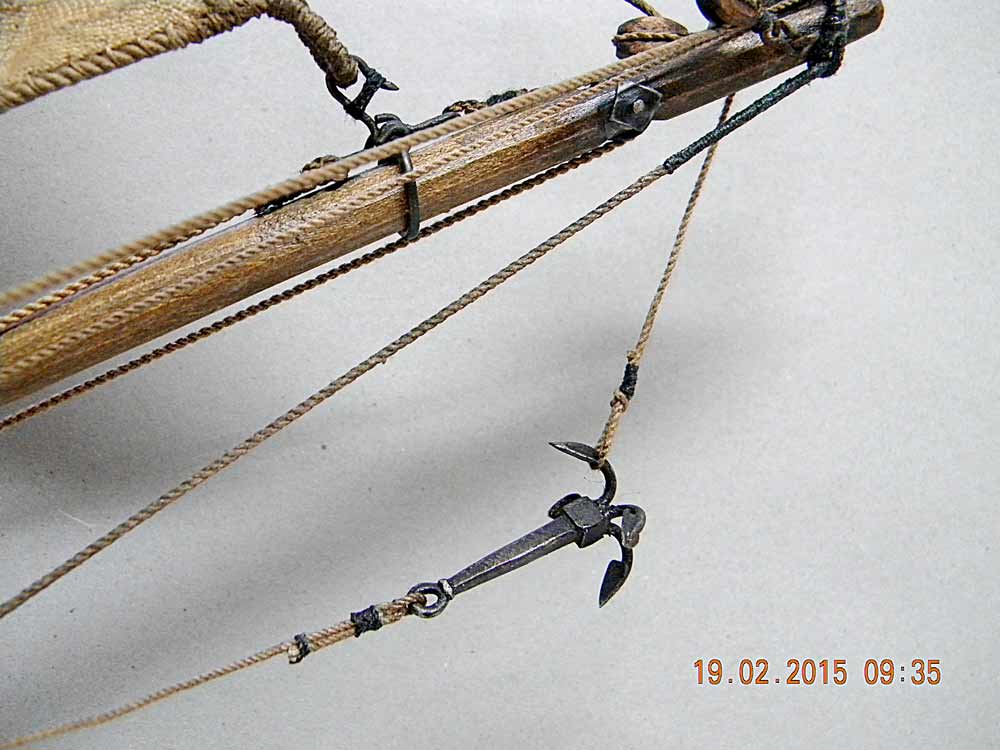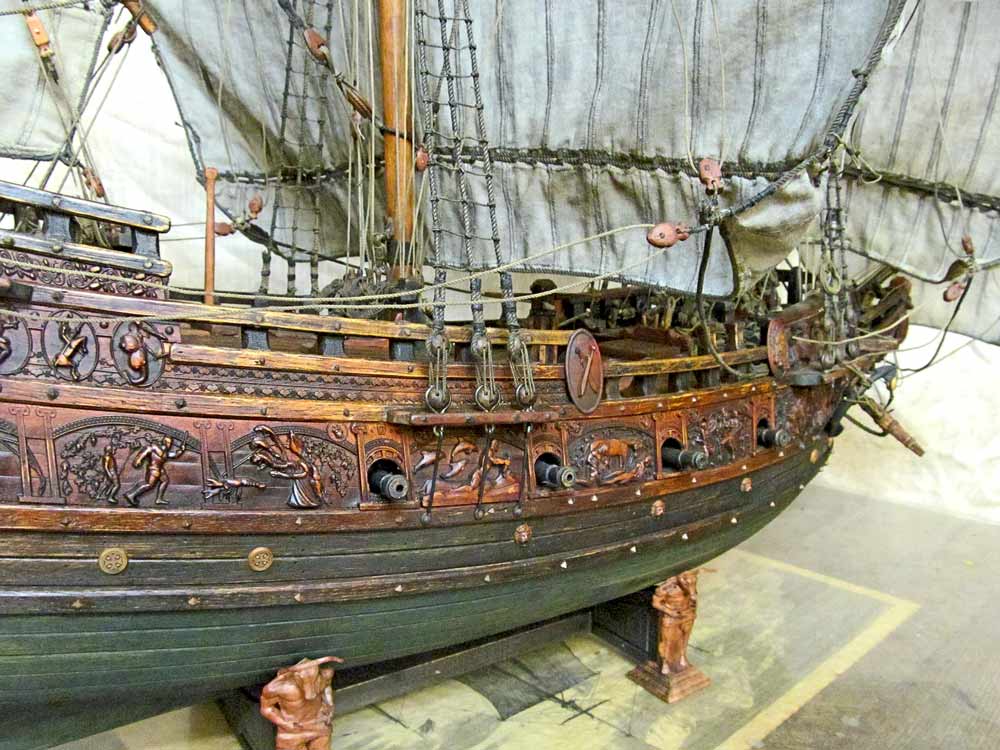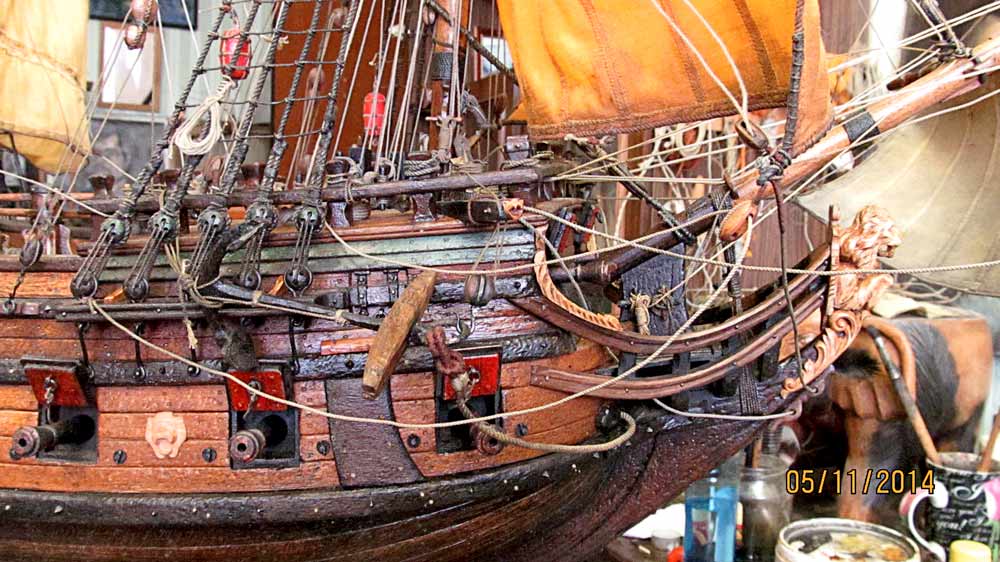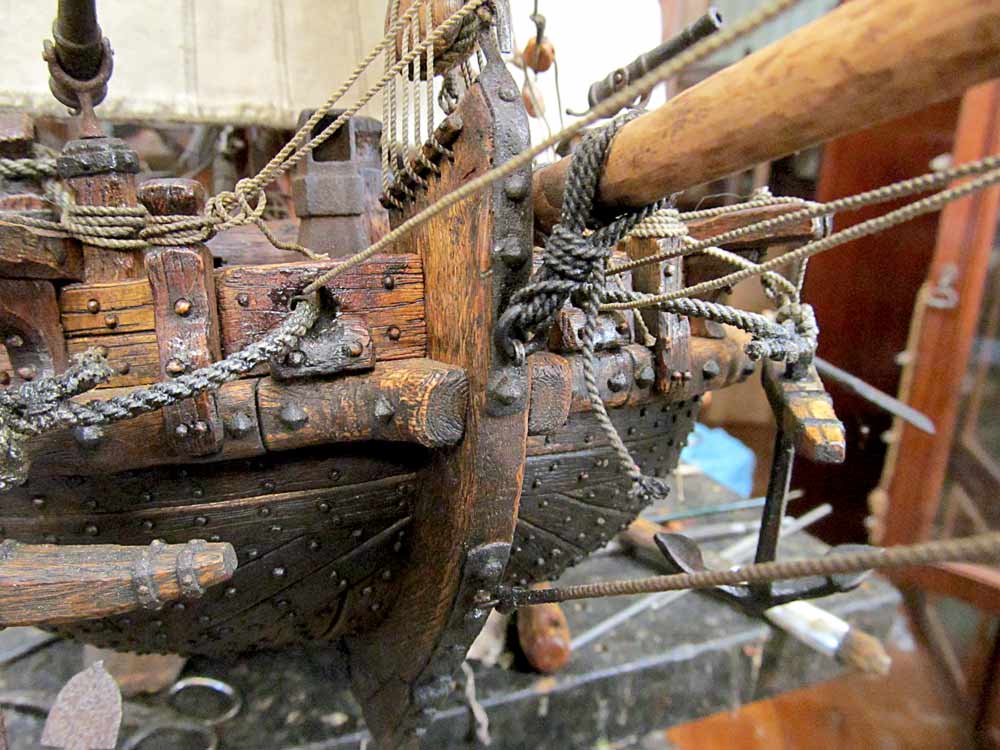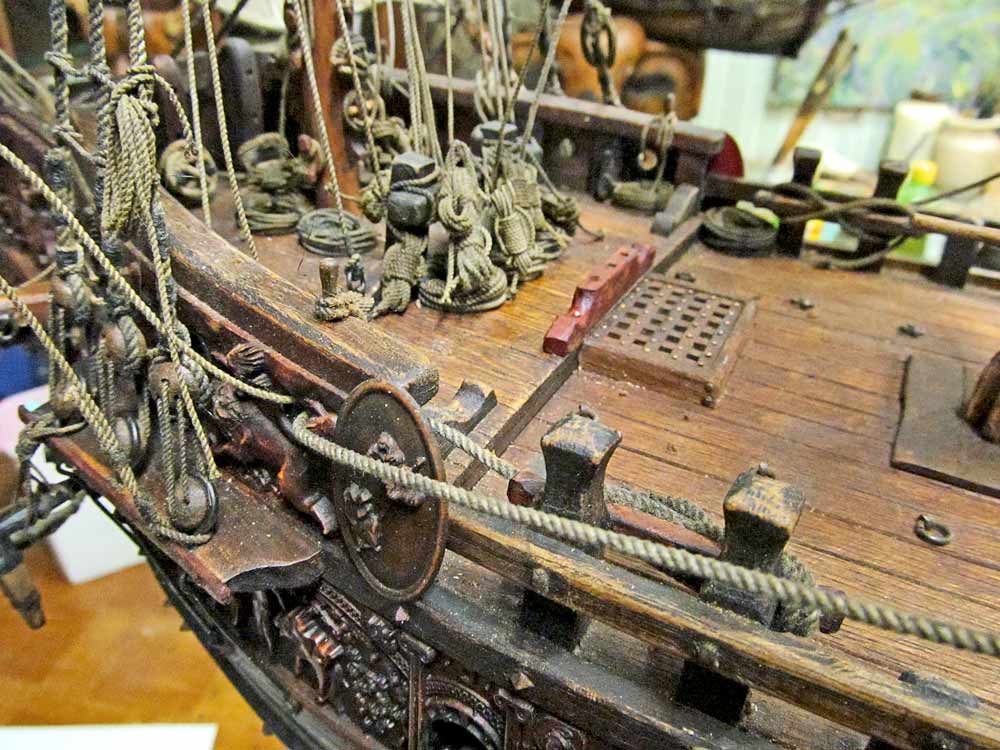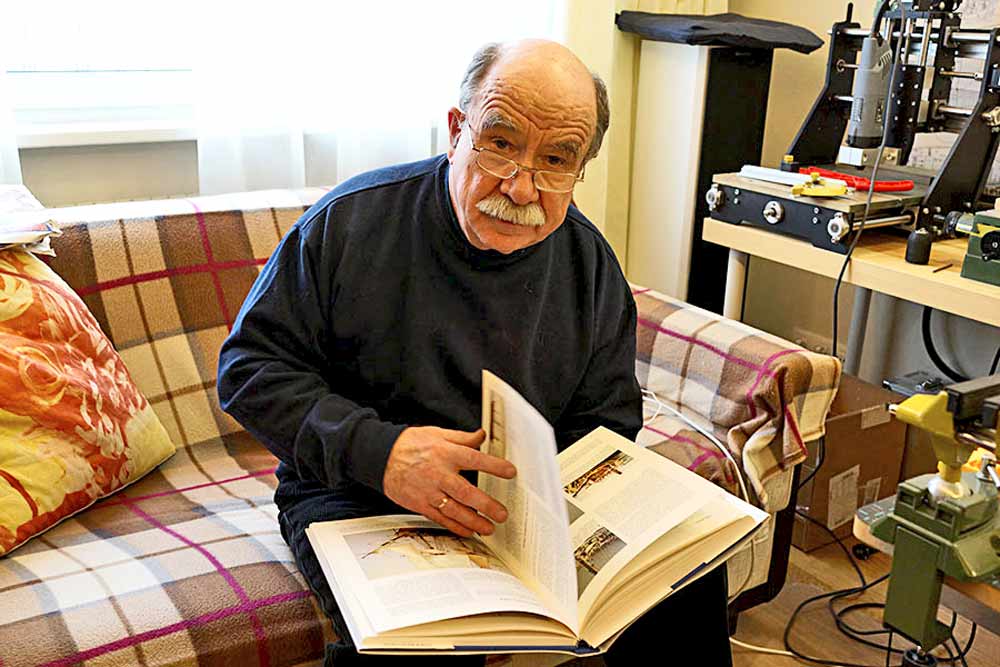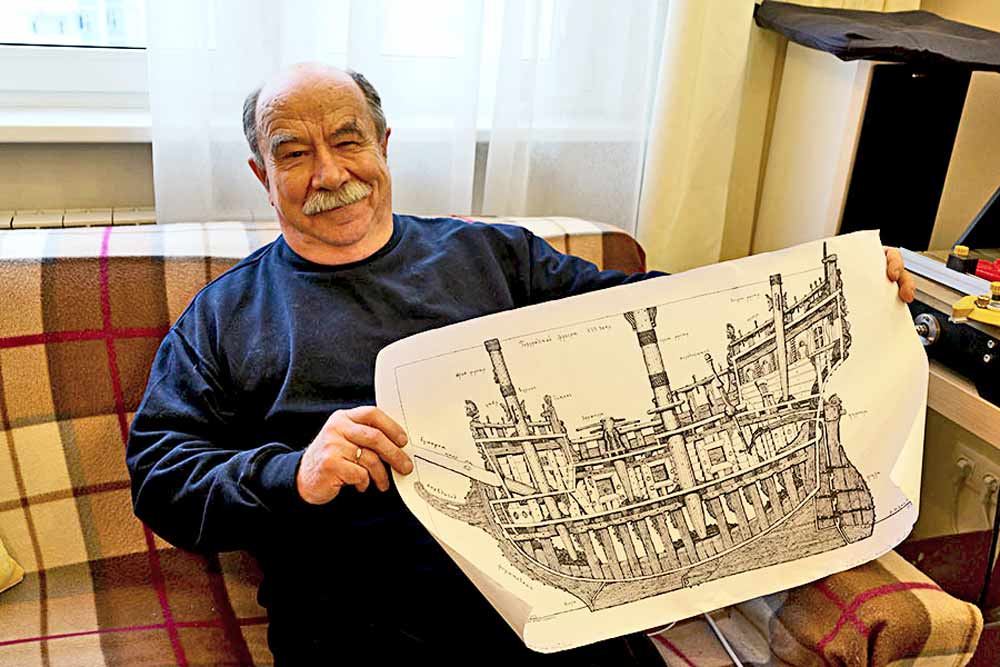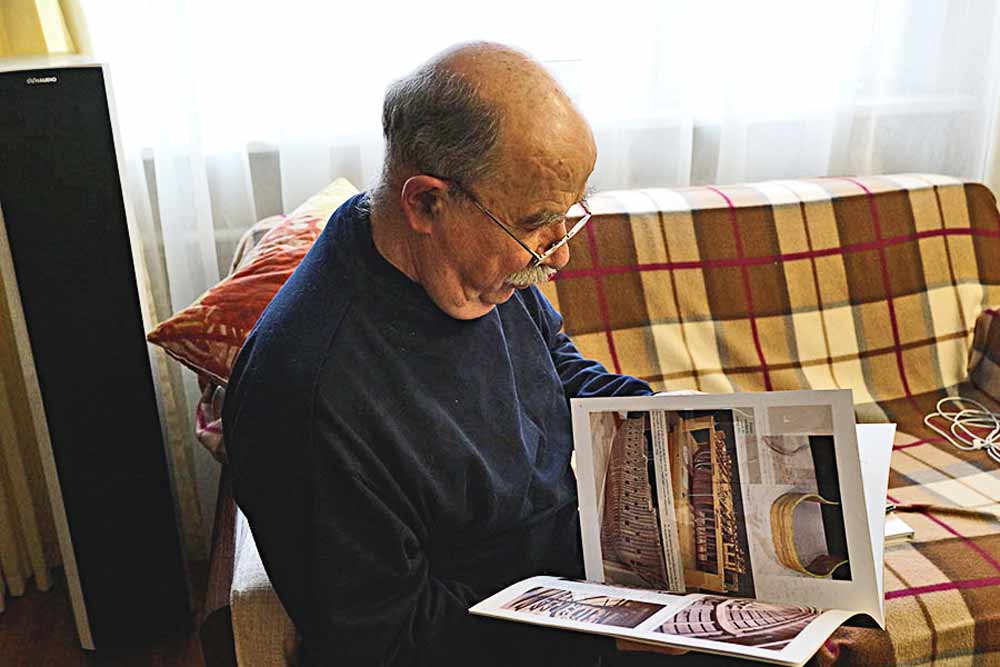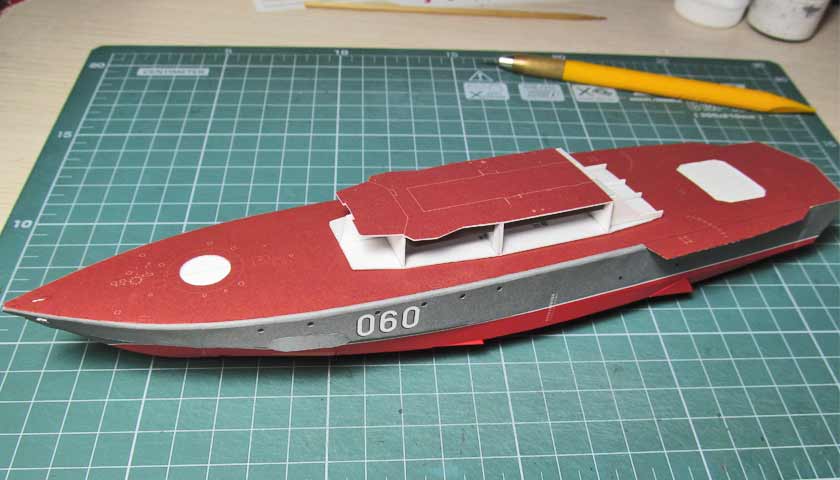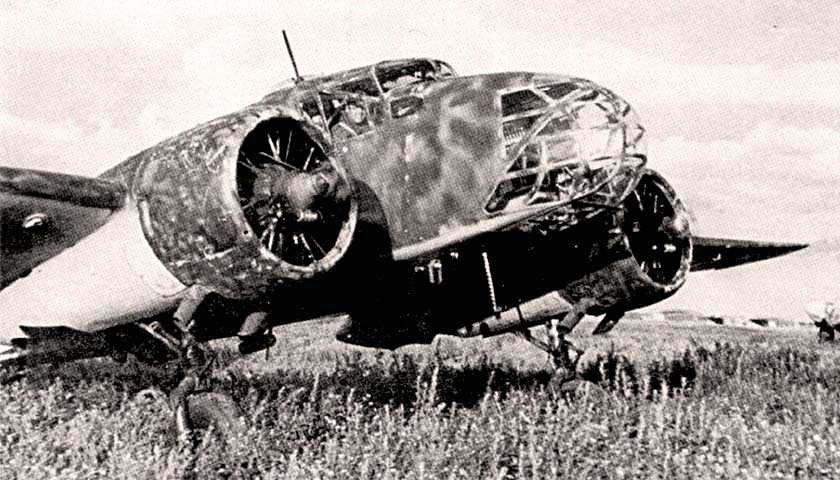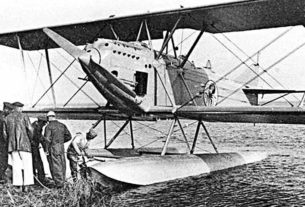Part 1
The hero of my story was born in 1947. This is Vladislav Zhdan, a well-known ship modeler in Russia. He lives and works in Moscow. Today he is a recognized master of his craft. His models of old sailing ships are in demand in Russia and abroad.
Vladislav’s childhood was usual for that time. Since computers appeared much later, many boys of that time were fond of sports, music, science and modeling. Vladislav chose the latter; he built models of ships and aircraft.
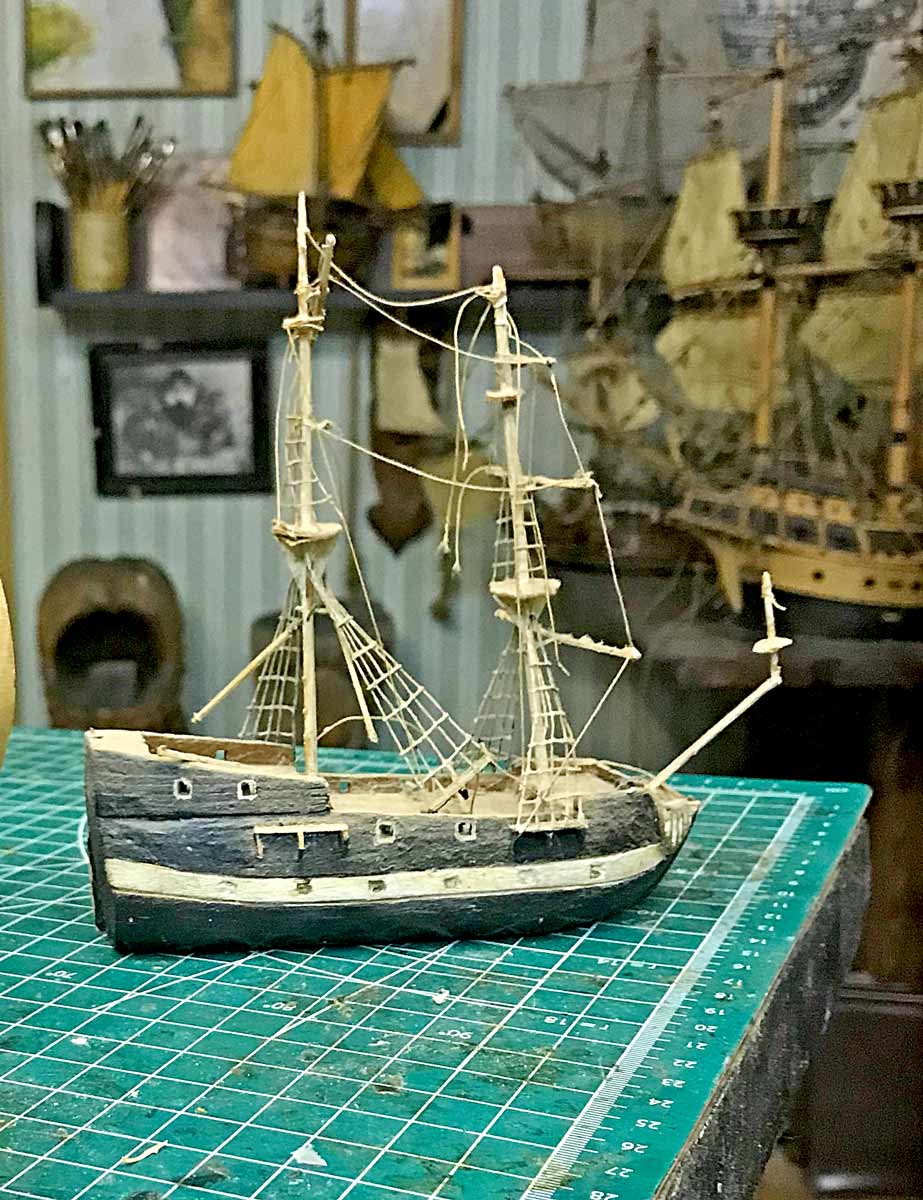
However, there was another hobby in his life. It was associated with the spiritual uplift that the country experienced in those years, having gotten rid of the horrors of war. Vladislav started drawing when he was in preliminary school. After leaving school in 1965, Vladislav entered the art college in Moscow. But, after studying for a year, he left college and since 1968 began to work in magazines and publishing houses as a graphic artist. The stage of the first professional work in the large publishing houses of the USSR “Knowledge” and “Soviet Russia” began. However, in the mid-70s, another turn took place in the artist’s life.
In 1974 Vladislav Zhdan took part in the movement of young nonconformist artists. He took part in the second exhibition of nonconformists in Moscow on September 29, 1974, which the communist authorities did not disperse. This exhibition took place in the Izmailovo forest park. You can see some works of Vladislav Zhdan presented at that exhibition in the video (https://www.youtube.com/watch?v=XwC0p4u_vdU, from 1:04)
The first, the so-called “Bulldozer Exhibition” (https://en.wikipedia.org/wiki/Bulldozer_Exhibition) exhibition, was dispersed by the police. This event quickly became known to the whole world.
It should be noted here that the group of nonconformists included Alexander Rabin, Vitaly Komar, Alexander Melamid, Yevgeny Rukhin, Lydia Masterkova and others. In total, about 15 people took part in the exhibition. The artists of Moscow have become known all over the world.
After the turbulent events of 1974, Vladislav continues to work as an artist. He leaves work with publishing houses and devotes himself entirely to painting. Vladislav paints new pictures. The works start to sell, and the artist gets a livelihood.
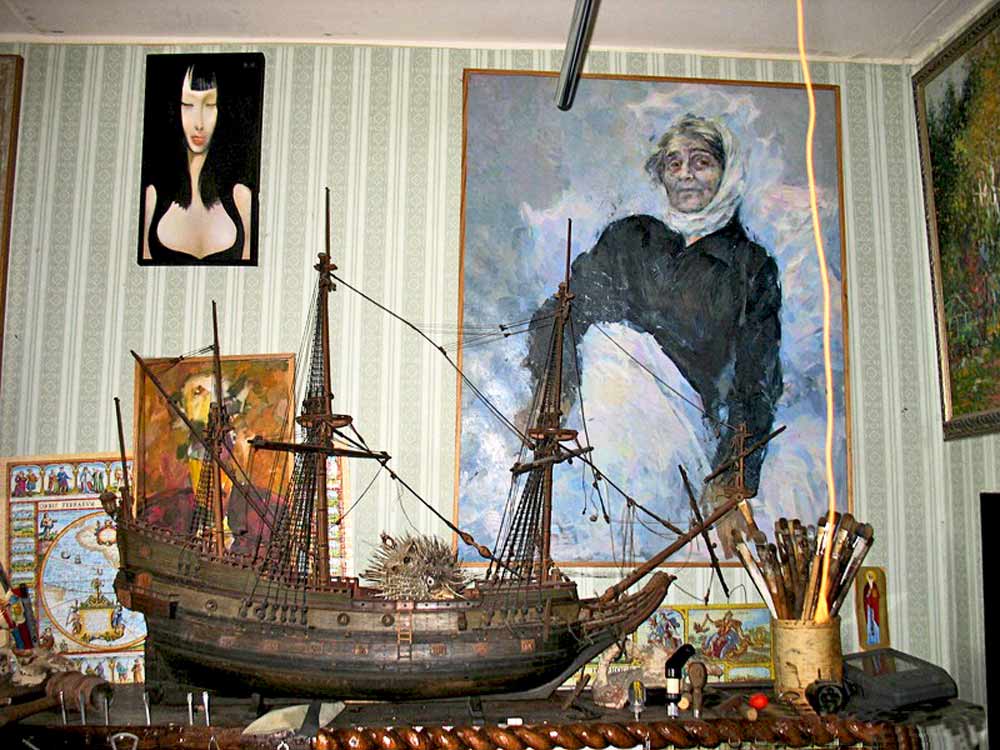
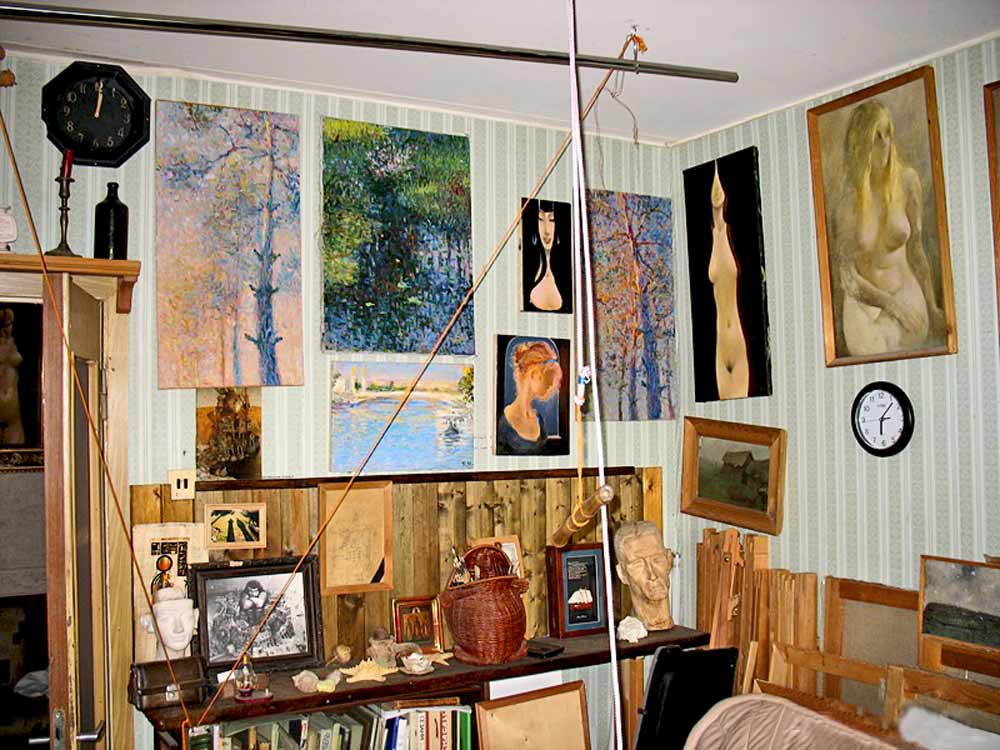
One of the best periods has come in Vladislav’s life. He is young and in love. The world seems beautiful. At this time, another passion of Vladislav manifests itself – motorcycles. On them, he traveled all over the European part of Russia. With his future wife, he traveled from Arkhangelsk in the north to the very south – Crimea and the Caucasus.
In 1982, two events took place in Vladislav’s life, which changed his life for a long time. His first child is born, and he opens a new page in his work. This is how he himself speaks of this time:
“In 1982, my son Igor was born. In that time, my wife and I lived in my art workshop.
I quickly realized that I would not be able to paint for a couple of months in the midst of day and night vigils with a newborn. And suddenly I remembered that from early childhood I had a blue dream to have a model of an old sailing ship at home. This is where it all started …”
In December 1982, Vladislav remembered that even in his distant childhood, his father gave him a plastic kit for building a sailing ship. Vladislav built this model, and it has survived to this day. This model opened the way for Vladislav to ship modeling.
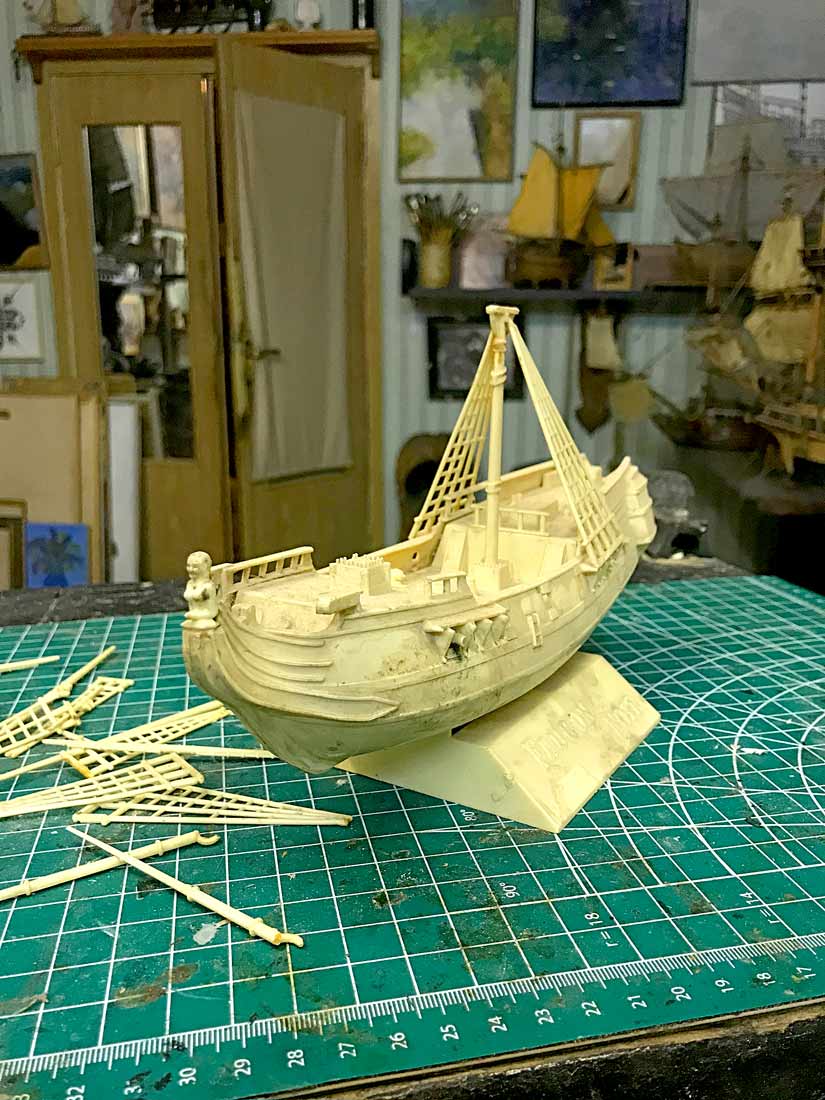
He remade her in his own way, made her floating, and even sent her swimming in the pond that was next to the house. The first construction experience was so successful that Vladislav became seriously interested in ship modeling. It was a very difficult business at the time. There was no information about sailing ships, no machines, no tools. There was only a thirst for construction.
Relatives and friends helped Vladislav with advice, tools and books on ship modeling. A relative helped him make him a small machine to saw the wood for planks for the recruiting and plating of ships.
Knowledge and experience gradually came. And as often happens in such cases, people began to appear who understood the intricacies of modeling sailing ships.
Vladislav got an experienced mentor who gave him the blueprints for the Hanseatic hulk and advised him during the construction of the model. This was the first serious professional job.
In 1984, Vladislav Zhdan with this model took second place at the Moscow Championship in ship modeling. Then, in the same year, his model reached 6th place at the USSR Championship, which was held in St. Petersburg, at that time called Leningrad.
Thus, Vladislav Zhdan entered the USSR ship modeling community and his skill was duly appreciated.
A new page has begun in Vladislav’s life. He learned to model ships, established contacts with a museum in Arkhangelsk. This northern city was the birthplace of the outstanding Russian scientist Mikhail Lomonosov. Vladislav made a model of the fish gukor Vasily Lomonosov, Mikhail’s father. Father and son went fishing together. Mikhail helped his father.
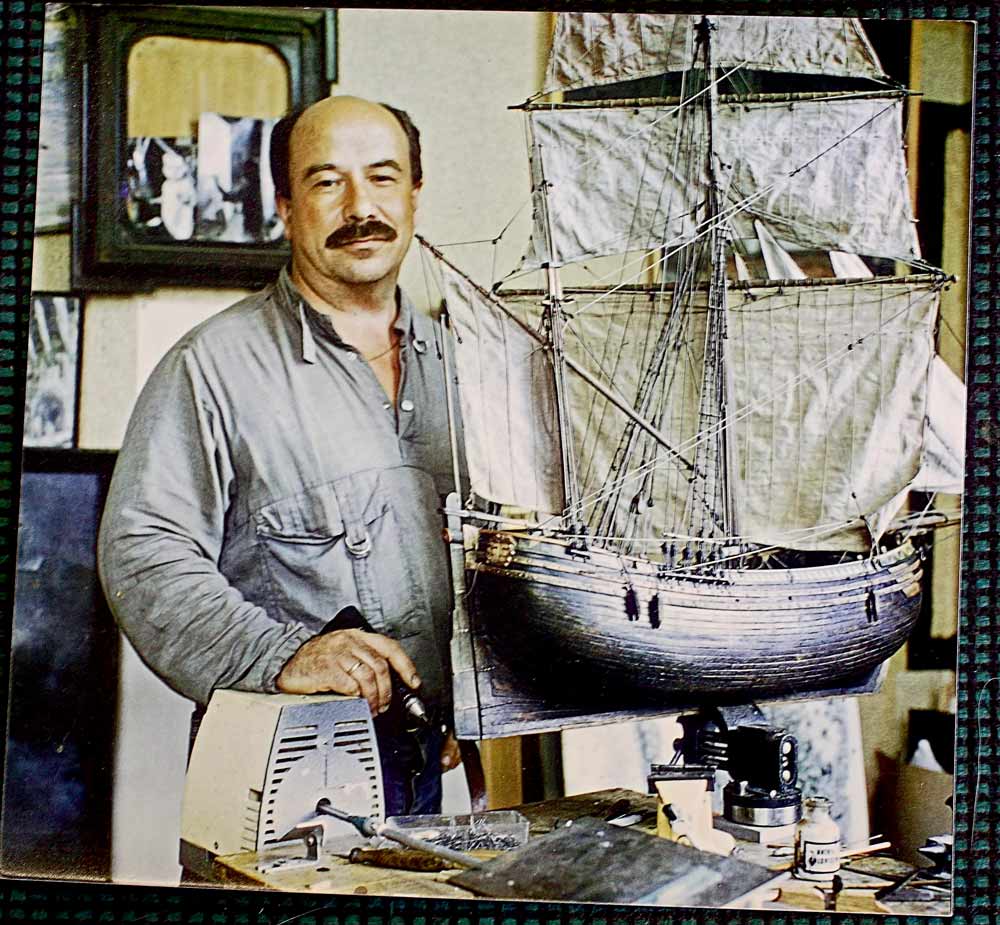
Vladislav Zhdan’s models began to be in demand, they were willingly bought by his friends, artists and businessmen. Soon, collectors from other countries began to buy Vladislav’s models. His works can be found in private collections in Denmark, Sweden, Norway, Yugoslavia, France, Poland, Great Britain, and Israel.
In 1989, Vladislav brought his models to Sweden. Here is how he himself talks about this interesting episode from his life:
“I had a separate story with Sweden. In 1989 my wife and I were taken to Stockholm by my gallery owner in his car. Ships and paintings were transported in a trailer. In Stockholm, I was in the museum of the famous Swedish ship “Vasa”. I examined the whole “Vasa” from top to bottom, even though it was still covered with some kind of protective grease that stuck to my arms and legs. I visited the Naval Museum, where I met three Swedish modelers who were building a five-meter model of “Vasa” in a room with a big window in full view of visitors.
Furthermore, I personally drove three nails into the “Vasa” ship model hull … !!!
Stockholm left the most wonderful memories, and not only those of the ship. ”
Time passed, Vladislav Zhdan gained experience and knowledge, his models became more perfect. However, another important event took place here. In Vladislav, the artist woke up with renewed power. And this part of his nature began to protest against the technical precision that underlies the construction of models.
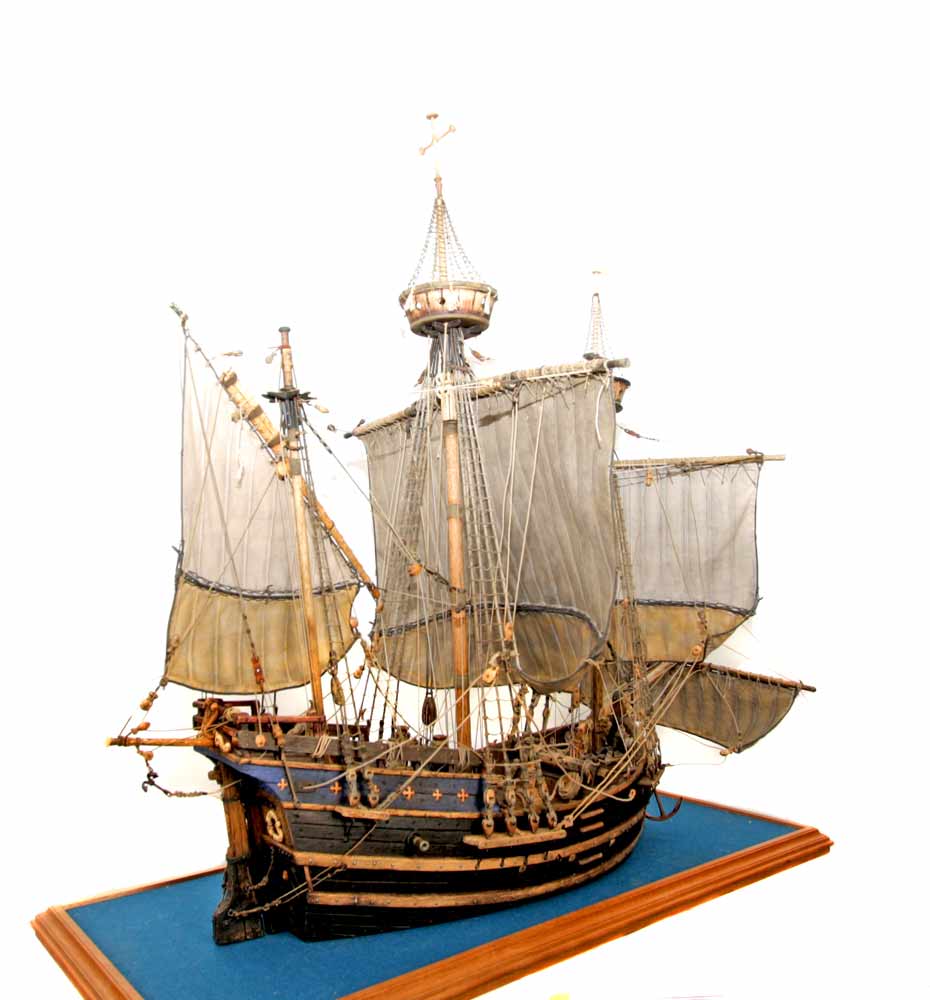
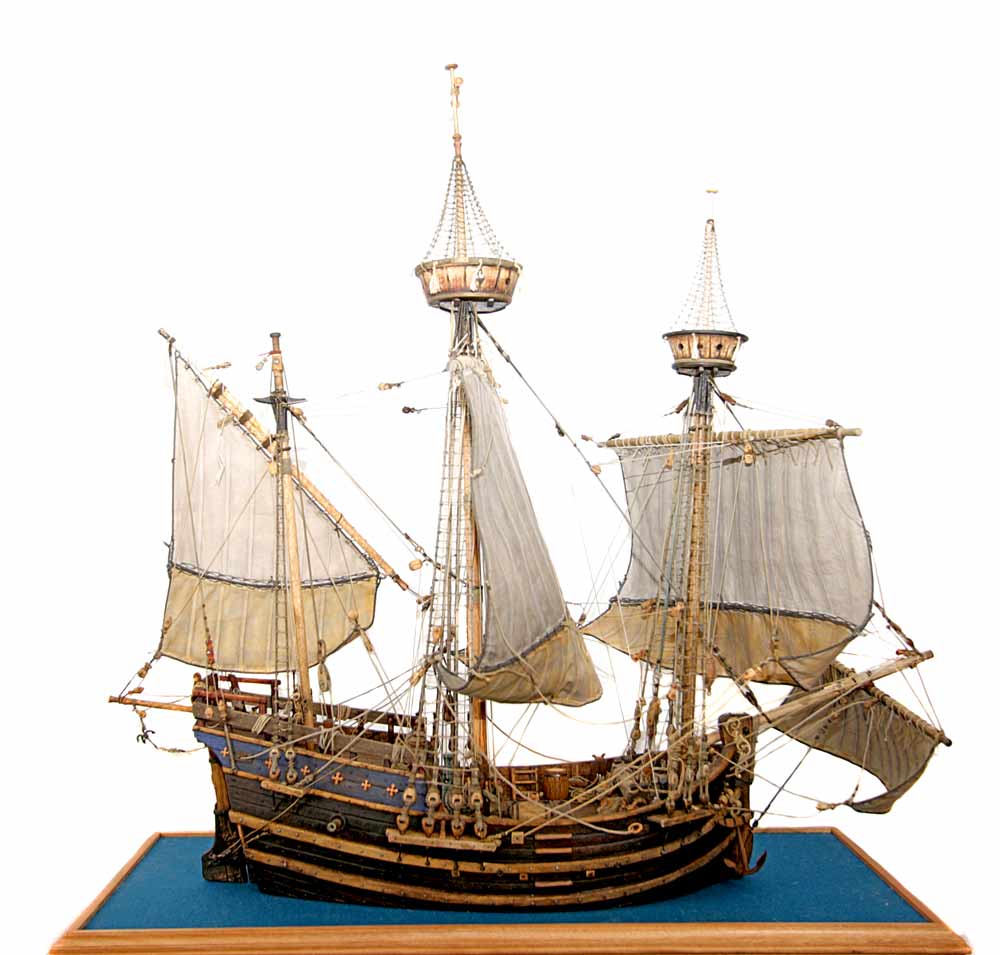
It is known that the modeler, when building a model, creates a miniature copy of the real object. And this word “copy” and the need to strictly follow copying in large-scale modeling has always evoked protests from the artist’s creative nature.
Here is how Vladislav himself talks about this conflict:
“The point is this is the word COPY, with us, with the artists … No, not a curse, as I said before. This is something that, in general, is not subject to discussion.
In art, only the original is valuable. There can be as many copies as you like; they are of no interest to anyone in the art world.
The need to create a copy of a real object, thereby being in a tight technical framework, all this became a big question for me….
Already on the first models, the judges at various championships mercilessly reduced my points for any artistic liberties in my models.
I remember in Gdansk, at the IX World Championship in 1998, out of 102 participants, I was 102nd. The only one without a medal. Although my model had an audience no less than the winning models.”
The moment came when the technician and the artist, who lived in Vladislav, entered into a tough confrontation. Then Vladislav Zhdan made an artistic discovery that formed his own modeling style. It is because of his unusual artistic vision of old sailing ships that I took up the story about this interesting master ship modeler. Moreover, I think, such unusual and striking models will be of interest to many modelers and collectors.
Here is how Vladislav Zhdan himself talks about this important moment in his work:
“As an artist, I understood that a hundredfold or fifty-fold MECHANICAL reduction of the ship’s size would not lead to anything good. This “kills” his image …
The laws of being for small and large forms are different. The miniature cannot be enlarged to the size of a wall mural. This will “kill” her, just like a wall fresco made in miniature, “perish” and will not look good.
If the ant falls from the height of the kitchen table, it will run further, as if nothing had happened.
If a person falls from the same proportionally increased height, only a wet place will remain of him. The laws of large and small forms … do not coincide.
Miniatures live according to one law, monumental things according to another one.
It is necessary to reduce it, by understanding how to preserve the charm of large forms of a real ship in small forms of the model.
Moreover, I began to make the IMAGE of the ship …, changing in its proportions everything that was supposed to work only for this IMAGE. Because of my artistic upbringing, I simply physically could not do COPIES.
I deliberately rejected the classics of modeling. I began to create PORTRAITS of ships.
If classical modeling creates a PHOTO of a ship, worse or better, then I tried to create a PORTRAIT of the ship the way I feel it.
And PHOTOS are beautiful and bad and PORTRAITS are good and bad, here it all depends on the talent of the author.
Photographically, it was not interesting for me to accurately repeat any prototypes of historically existing vessels for me as an artist, and I began to create my own projects based on historical vessels.”
This is how completely unusual models of old sailing ships were born, which evoked a strong response in the souls of people. Everyone is accustomed to seeing in models, first, technical perfection and technical beauty of forms. Vladislav Zhdan helped us expand the horizon of perception and invited us to see the artistic image, the nature of the modeled object.
This did not fit into the usual framework of ship modeling, and many modelers were at a loss. Everyone is used to the fact that the model is a miniature copy. However, Vladislav Zhdan’s models were not copies. Strictly speaking, they were not models either, since they have become independent art objects, detached from their original prototypes.
This is how Vladislav Zhdan describes this transformation:
“I was interested in ships of the 16-17-18 centuries. There was already enough knowledge. The main task was to create a LIVING ship, which is why more and more often he began to refuse to build the bottom of the ship, and to create projects of the visible part of the ship along the waterline.
This unties the hands even more and makes it possible to make the necessary changes in the proportions and details of the vessel even more INVISIBLE to others … for its even greater life believability and persuasiveness.
In my opinion, the classical approach to ship modeling is mostly, unfortunately, limited to the formal-technical approach, that is, the creation of an accurate but lifeless form of a historical vessel … Sometimes used with different types of wood, sometimes they tint with paints.
Practically no one thinks about the inner essence of the ship, about its “soul”, and for me this is more important than recreating its exact anatomical resemblance.”
Although this approach did not fit into the existing canons of ship modeling, the undoubtedly bright style of Vladislav Zhdan’s models quickly found its admirers and won the hearts of many collectors around the world.
When the way was paved for a new ship modeling style, Vladislav Zhdan set up the production of his models. He joined forces of his like-minded people and the result was a small family business, which began to produce unusual and striking models.
Vladislav says:
“I teamed up with several friends. Some of them made me blanks for the cases, according to my project, purely mechanical, non-creative work, which was no longer interesting to me. My other assistants sewed sails…. We taught this craft to our wives. Wood carvers made carvings according to my sketches …
The foundry workers … no, it didn’t work with the foundry workers … I don’t even know why … I liked doing everything from wood more. And only then I combined it IN ONE … in the IMAGE … of the ship I had conceived.
This is how we have been working for many, many years.
It is true, my Masters are changing, new ones come …, old ones leave … some already, forever. “
Work was in full swing, since the USSR ceased to exist, and it became possible to work independently, without state intervention and control on its part.
In the 90s, many interesting events took place in Russia. This is how Vladislav Zhdan talks about it:
“Our generation of professional modelers was in a golden age. The nineties passed, GOLDEN years for artists…
New Russians 1 rowed money with shovels and generously distributed part of it to us, those who decorated their new homes. There was no end to the customers. Many of them, by the way, were sailors or yachtsmen in the past….
I well remember one of them in the past as a yachtsman, a wonderful old seaman with an iron handshake, a steel palm, able to pull a wet sheet rope in any storm. We made eight models for him, which had decorated his huge house at that time.
There were orders from museums; here I tried to limit my imagination of proportions as much as possible. Many took models for themselves. Many models were as gifts. Luzhkov 2 alone received six of our models. B. Berezovsky 3 even took his own with him to England …
Vladislav Zhdan had made the final choice at that time. Painting, which he was engaged in all his life, finally gives way to ship modeling creativity. From that moment, Vladislav completely switched to the construction of his unusual art ships.
“And the ships became the main work in his life … occupied the whole soul. For about 6-7 years, I still tried to paint … Then everything … only sail ships!
Although, who knows what lies ahead? “
Today Vladislav continues his activity, so to speak, as a shipbuilding artist. He works at his home in Moscow and at his dacha.
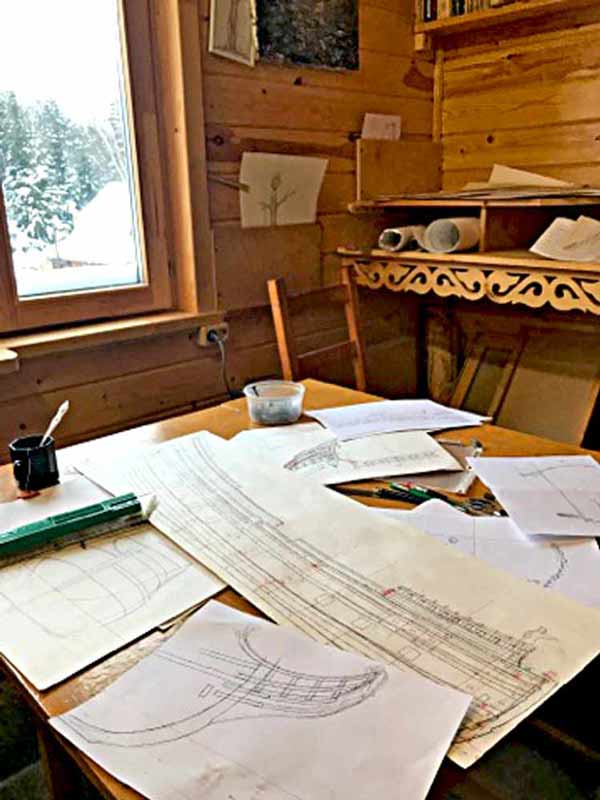
Currently, Vladislav has begun developing a new ship, the frigate Orel, which became the first Russian ship built on the Dutch model.
1 A person who quickly became rich on the wave of general chaos in the country. Equivalent to the word “nouveau riche”.
2 Luzhkov Y. M. – Mayor of Moscow from 1992 to 2010. See https://en.wikipedia.org/wiki/Yury_Luzhkov
3 Berezovsky B.A. (1946-2013) – Russian oligarch. See https://en.wikipedia.org/wiki/Boris_Berezovsky_(businessman)
To be continue…

